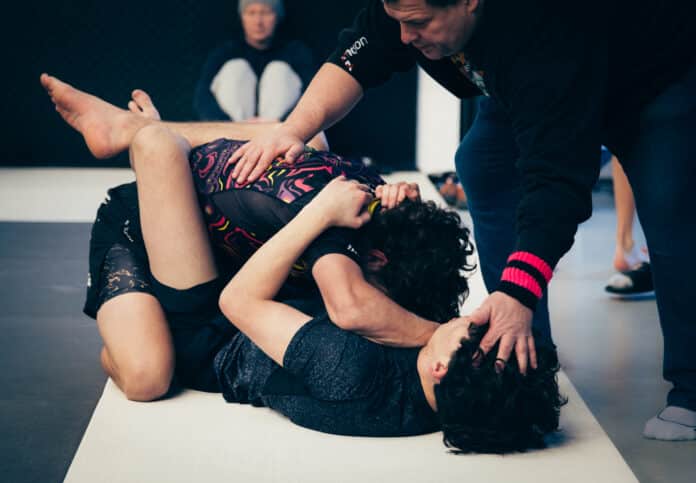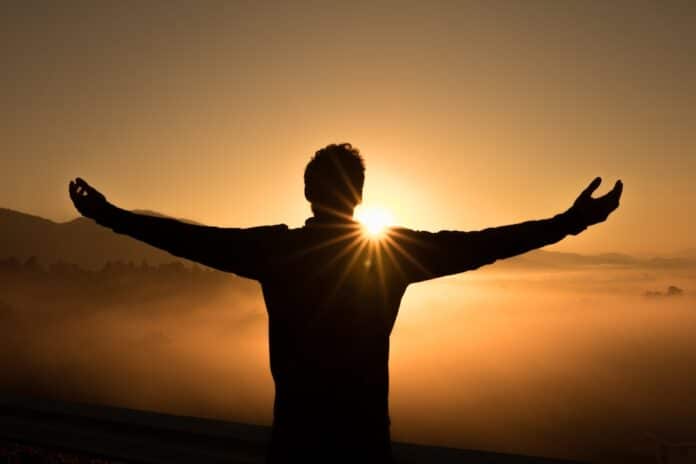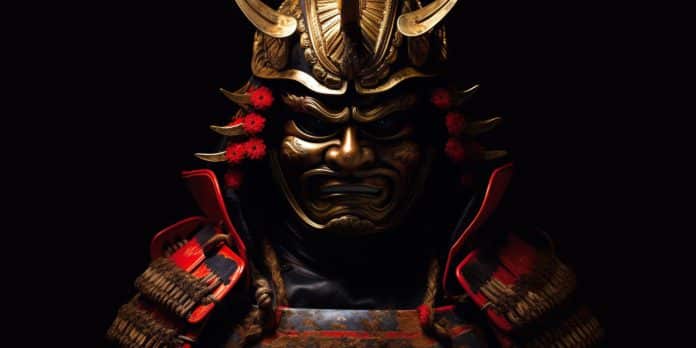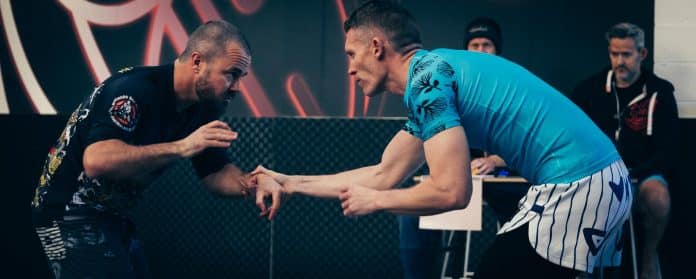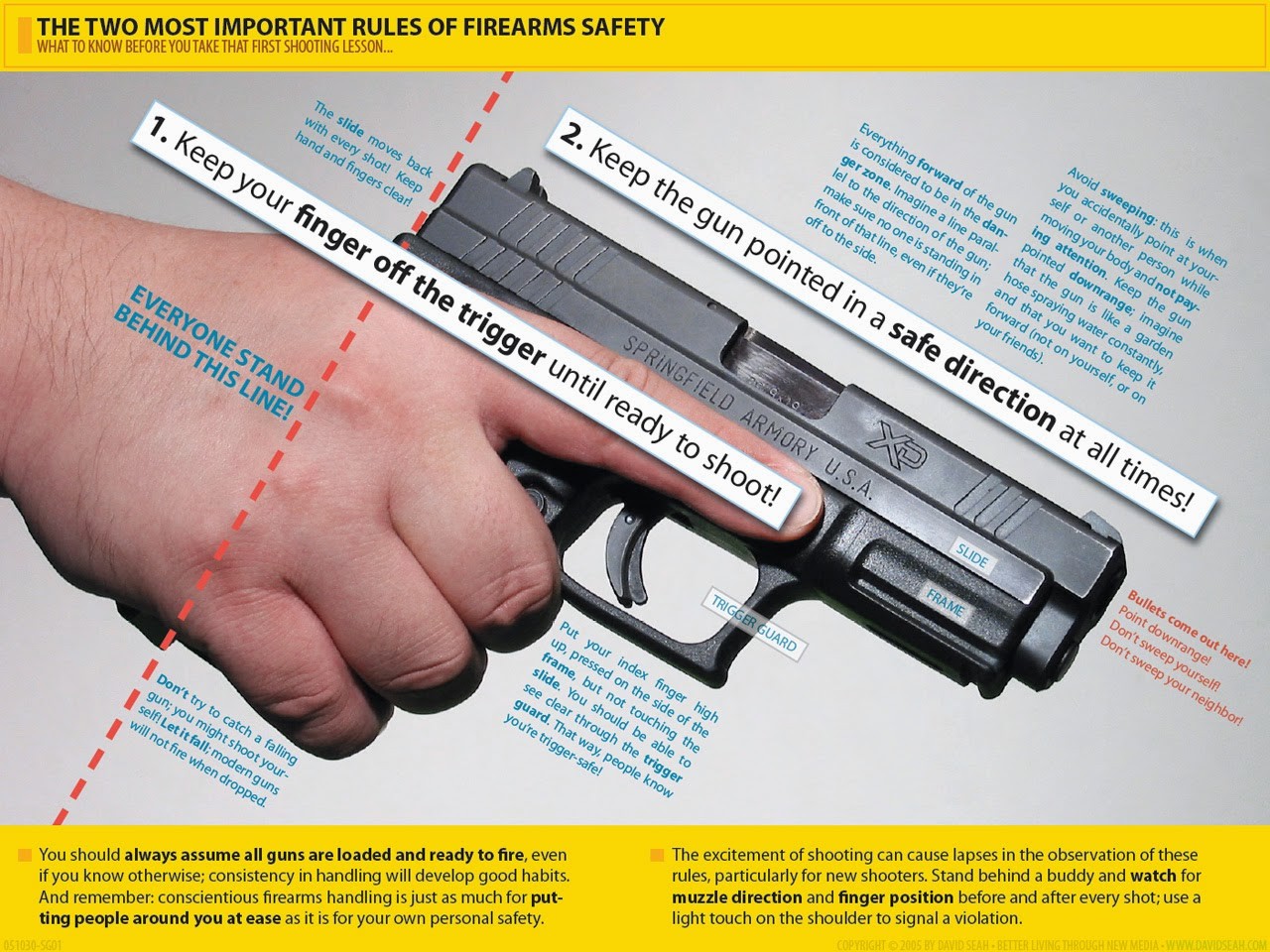Explore the Kaimanawa Wall’s origins, debunked theories, and why alternative history fascinates us. Curious about hidden histories and ancient mysteries? Dive in now.
Understanding the Defensive Cycle: Why It Happens and How to Break Free
Struggling to break free from a defensive cycle in Brazilian Jiu Jitsu? Discover actionable techniques and mindset shifts to become more offensive and dominate the mat.
Essential Tips for Prostate Health After 30: Foods, Exercises, and Lifestyle Changes
Discover essential tips for prostate health after 30. Learn about beneficial foods, exercises, and lifestyle changes. Are you doing enough to protect your prostate?
Unlocking Your BJJ Potential: How Mastering Alignment Can Transform Your Game
Unlock your BJJ potential by mastering alignment. Discover how proper positioning can transform your game. Ready to elevate your skills on the mats?
Mike Dyson from goodblokes.co
Mike runs Good Blokes – a facilitator for a range of events and courses focused on well, building better blokes! While doing the research for the name change (which honestly, I had already set my mind on) – I came across his site and was immediately keen to have a chat with him for the…
So, what have I been up to?
Well. Hasn’t a year gone fast?
It’s been nearly a year since I last posted on any of the sites or social media. It’s not so much a case of not doing anything, but more happily not having/feeling the pressure of regular posting or updates.
A lot has been going on. Since I was last active – I have committed to regular and ongoing therapy and have now been ‘officially’ diagnosed with clinical PTSD, manifesting in Disassociative Personal Disorder and Anxiety Disorder. For those who know me socially, I would pick this to be a bit of a surprise – as to be blunt – over my life, I have learnt to be very functional and mask the anxiety and issues I have had going on in my head. Throwing myself into new projects and challenges has certainly been part personality but also part coping mechanism – like many of us, keeping busy keeps me from thinking too much. Or, as best as I can describe it, it helps compress down a base level of anxiety I have going on in the background for a large part of my life.

It’s like the noise floor was raised
The anxiety aspect has been interesting to slowly come around to observing and understanding.
Because I have lived with it for so long, it became my norm. So I didn’t consciously notice it anymore. But as I have been helped to take a little step aside and observe it, I have come to see it as a low (or not so low) level of noise or hum that was/is always there – just constantly percolating away under everything and anything I did/do. Just this real base level of anxiousness sits there, slightly skewing everything I perceive, react to and do.
Having a background in Audio Engineering – the other metaphor that works for me – is that I have been living with a high-noise floor most of my life – which means all the actual signal gets muddled up with the noise and static that sits there. By working on aspects of my life and talking about and observing what’s going on, I have seen that noise floor reduce (it’s not gone, but it has reduced), which gives me more silence, more separation, more ‘dynamic range’ back in my life.

Hunting, Fishing? Not so much.
I haven’t been out as much as I used to. Life, other priorities. But, do still get out for the odd fish – though it often coincides with me needing to test something from work. However, with spring and summer quickly approaching, I am starting to plan a few camping trips with the kid and new partner – which, for the first time in quite a while – is a bit of an exciting prospect for me. Like many people, I managed to kick the passion out of a passion by trying to turn it into work (this site being the prime example) – but – I have realised that even in my new job (still at Marine Deals) – I am constantly driven to learn, document and educate – and in the last couple of weeks, I have found myself pottering around in the back end of this site again – dabbling in the idea of publishing something again. This post has been on and off for a couple of weeks – as I hummed and hared, deciding if I wanted to fire it up again.
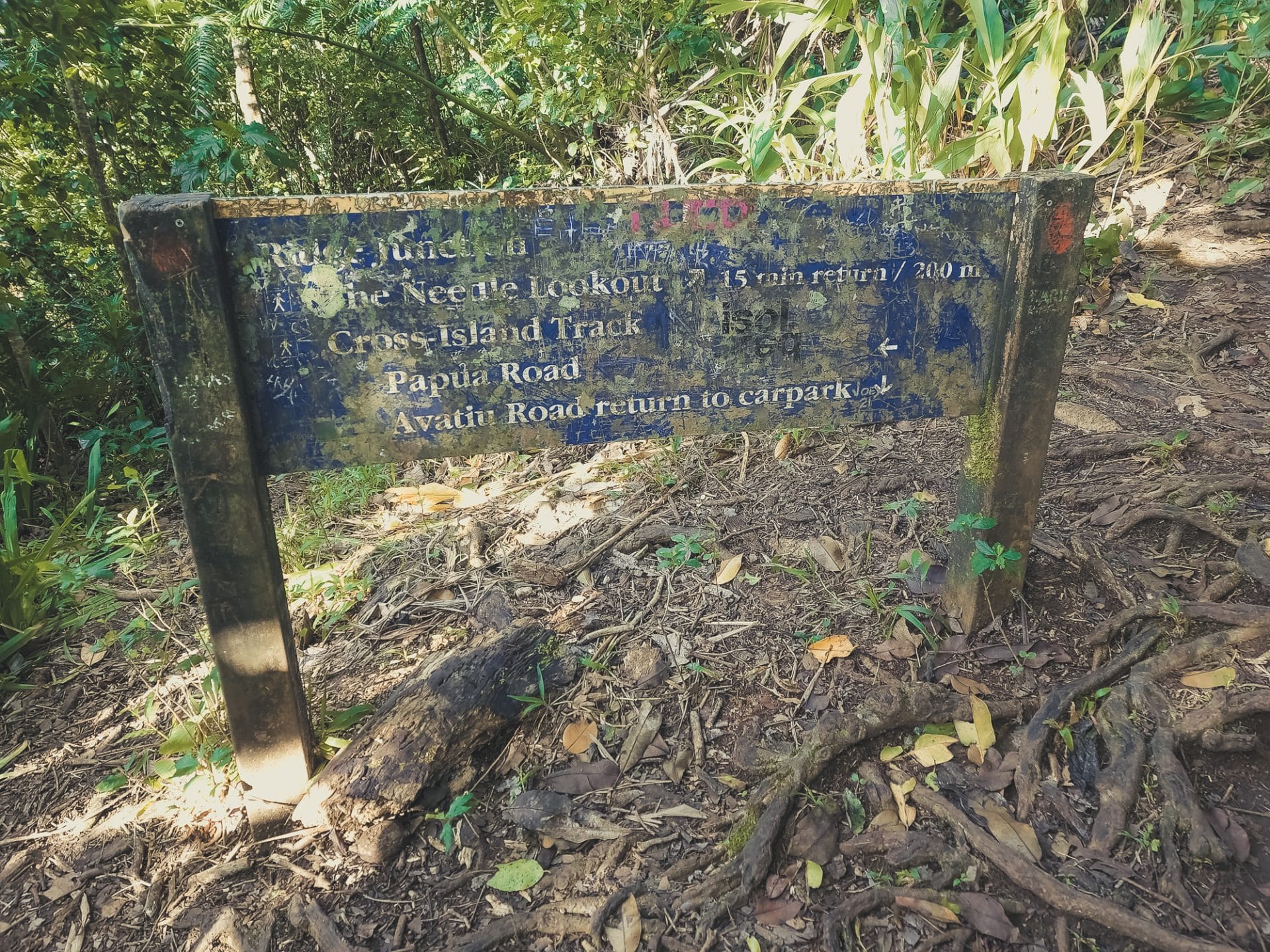
New hobbies to document and discuss
This is actually not the first time I have got a site back up and going again after a hiatus. Before Goodblokes/TheBloke was actually another site called The Proof, which I ran while involved in the Music Industry. That also died as I burnt myself out (you would think I would learn eventually!) and, after a time, was reborn as The Bloke. While I don’t plan on a total rebranding this time around, there are certainly some new projects and hobbies I have picked up and have been focusing on since you last heard from me.
Jiu Jitsu

Oh, so on trend Kerry!
I actually signed my girls up for Jiu Jitsu before Covid – but – as has been the case for many people’s plans over the last couple of years, that didn’t eventuate – throw a separation in there as well, and getting two kids to regular training was becoming a challenge. However, I also decided in the process that I wanted to get back into something as well, so, nearly a year ago now, I signed up to do something rather new and, to be blunt, rather challenging for me.
There will be a separate article on this, but, it’s not the first time I have been involved in martial arts – but it had been a long time!
It’s going to like sound cliche, as all ‘new to Jiu Jitsu’ folk tend to sound, but, it’s been a phenomenal journey so far – and I am enjoying every training session, every challenge, and submission coming my way!
Regular training, eating better, stretching and barefoot!
A lot of this isn’t that new to me – but – nothing like being involved in a combat sport to encourage you to sort the rest of your life out simultaneously! I have gotten back into regular training around the BJJ – and, as I grow older, I realise more and more how important it is to use this body before I can’t do so anymore. Strength training, mobility, nutrition – all become more important to me as I learn to accept that this body of mine is getting older, a little more ‘worn-in’, and requires a bit more maintenance than it used to.
Therapy
As I mentioned at the top, I have been seeing a therapist every week for over a year now.
It’s helped in so many ways, and has, ironically, reminded me about some of the reasons I started this ‘journey’ in the first place. I have been seeking to ‘fix’ myself, and protect myself for a long, long time, and it’s only recently that I have finally accepted that I might need some help from someone else to do so.
So. What’s the future of the site?
Not really sure, to be blunt. I will see if I get back into a regular posting schedule, but, no promises.
I have wanted to keep this site up over the last year because of the vast amount of resources that are on it, but, I am still aware that ‘blogs’ sit in an odd place in the modern social-media landscape. What will become of it long term, I still don’t know.
So. Welcome back; thanks for the support, and hopefully, you will be hearing more from me in the near future!
Oh – also – new mix for you!
The Power of Presence: How Fathers Can Teach Their Daughters About Mindfulness
Mindfulness might seem like a tall order. Still, even the tallest of orders can be filled, one spoonful at a time.
With the right approach, teaching your daughter about mindfulness can be a fulfilling, enjoyable journey for both of you. Let’s explore practical ways to make mindfulness part of your everyday activities, like the card game ‘Spoons’, and how to create an environment that encourages mindfulness and ‘being present’. Incorporating it into your routine will help foster her mental well-being and your bond.
Understanding Mindfulness: The Basics
- Mindfulness: It involves paying attention in a particular way, on purpose, in the present moment, and non-judgmentally. It’s about slowing down to notice what you’re doing.
- Being Present: This is about being entirely focused on the task at hand, not being distracted or multi-tasking but fully engaging in the current moment.
- Concentration: One of the most important yet also one of the most overlooked aspects of mindfulness. It’s about focusing on one thing at a time, preferably without distraction.
Ready to dive into this life-enhancing practice? Let’s jump on in!

Practical Techniques to Foster Mindfulness in Daughters
Listen up, dads, teaching mindfulness to your daughters doesn’t need to be a daunting chore on your to-do list. It all starts with simple, everyday activities that you can incorporate into your daily routine.
Bringing ‘Mindfulness at Play’ into Practice
One excellent reference for teaching children mindfulness is the book, ‘Mindfulness at Play’. This book introduces a series of interactive exercises that can help your daughter understand mindfulness principles in a playful and age-appropriate way.
For example, one game in the book focuses on your breathing while pretending to blow out the candles on a birthday cake. This simple exercise helps to centre attention and cultivate mindfulness, teaching your child to be aware of her breath – a central concept of mindfulness. Furthermore, it’s easy to introduce at different times, such as in the morning, before bed, or when your daughter is anxious or overwhelmed.
Leveraging the Game of ‘Spoons’ to Encourage Mindfulness and Concentration
Another practical and fun activity you can introduce is the card game ‘Spoons’. This game requires concentration quick reactions, and can be a fun way to cultivate mindfulness and present moment awareness.
In ‘Spoons’, players pass cards around the table, trying to get four of a kind. When a player achieves this, they take a spoon from the centre of the table. This action continues with all players grabbing for a spoon till there’s one player left without one. This player is out of the game, and the round ends. The game helps nurture a state of ‘alert mindfulness’ in your daughter as she has to always be on the lookout for opportunities to get four of a kind and grab a spoon!
I only recently learnt about this game – from my daughters – but I like it for several reasons.
- The rules are simple, and once you learn them, it can be a pretty fast game
- It demands concentration – the ability to be still aware of your environment and react to potential sudden changes.
Create Mindful Environments
Establishing a mindful environment at home is equally important. Try dedicating a calm and quiet space for mindfulness exercises, where your daughter can practice being present and concentrate on the here and now. This special place could have calming elements like soft cushions, an oil diffuser emitting soothing scents, or a simple Zen garden.
Above all, remember your engagement and involvement are crucial to your child’s mindfulness journey. Your example of incorporating mindfulness into your own life will provide your daughter with a real-life model of the benefits and practices of mindfulness.
The present moment is the only time over which we have dominion.
Thich Nhat Hanh
Redefining Masculinity: Embrace Strength, Reject Toxicity, and Be a Force for Positive Change
Think about it: lifting weights, engaging in combat sports, and striving for physical prowess can all be aspects of a healthy and empowered masculinity. These activities can boost your self-esteem, improve physical health, and even provide a sense of camaraderie. However, it’s equally important to cultivate emotional maturity and be a supportive partner. Emotional strength, after all, is just as vital as physical strength.
You can be both strong and vulnerable. Being physically powerful doesn’t mean you need to hide your emotions or dominate others. True strength lies in understanding and balancing both aspects of yourself.
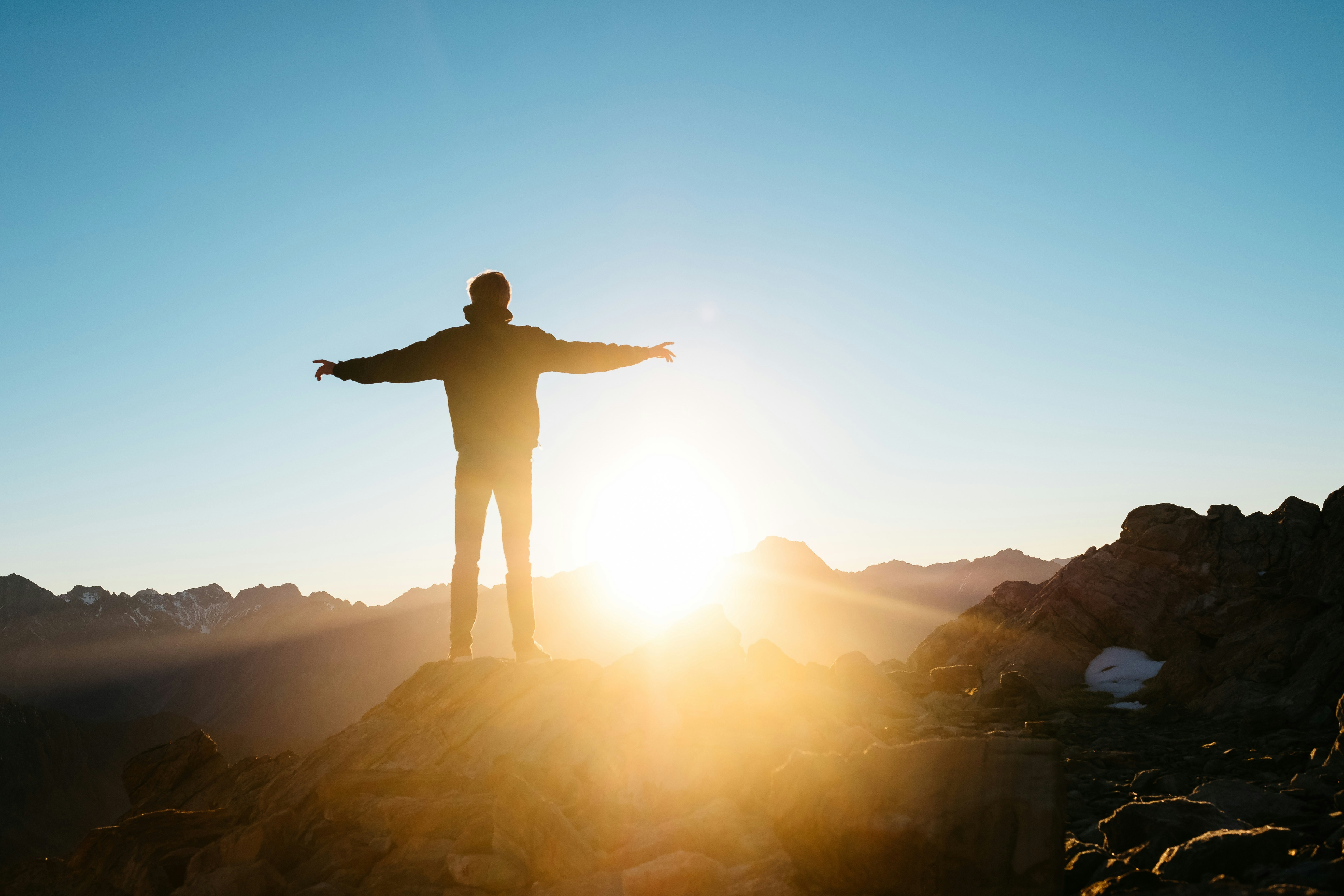
The Manosphere Split: Self-Help vs. Toxic Influences
The “Manosphere” is a term used to describe a collection of websites, blogs, and online forums that cater to men’s issues, focusing on masculinity, men’s rights, and self-improvement. However, within this sphere, a significant split exists between positive influencers and toxic personalities.
On the beneficial side of the spectrum, figures like Dr Andrew Huberman—an American neuroscientist and associate professor at Stanford University—are leading the charge. With a strong emphasis on physical and mental health, Huberman provides evidence-based advice on everything from sleep and exercise to mindfulness, offering men constructive tools to enhance their well-being.
Huberman’s approach fosters a holistic understanding of masculinity, where traits like strength and resilience are balanced with emotional intelligence and mindfulness. By encouraging men to be introspective and health-conscious, influencers like Huberman are challenging outdated notions of manhood.
Additionally, influencers like Lex Fridman, a researcher and podcaster known for deeply reflective interviews on subjects ranging from artificial intelligence to human emotion, add intellectual and emotional depth to the manosphere. Lex champions a balanced life where empathy and curiosity stand on par with physical strength and resilience.
Similarly, figures like Nsima Inyang and Mark Bell offer valuable insights into strength training and physical fitness. Nsima, a trainer and bodybuilder, emphasises the importance of a holistic approach to health and fitness, integrating mental well-being with physical prowess. Mark Bell, a powerlifter and entrepreneur, promotes strength training as a pathway to personal development and self-discipline. While no influencer is without flaws, these figures’ overarching message is positive, balanced self-improvement.
Modern podcasters like Joe Rogan also play a dual role in this space. Rogan, known for his podcast “The Joe Rogan Experience,” often delves into subjects that span fitness, mental health, and the importance of resilience. While his platform can sometimes host a range of perspectives, Rogan frequently emphasises the value of intellectual curiosity and personal improvement, encouraging men to enrich themselves physically and mentally.
Another positive force is Jocko Willink, a retired Navy SEAL officer, best-selling author, and leadership consultant. Jocko’s teachings on discipline and leadership resonate with many men looking to channel their inherent strengths towards constructive ends. His podcasts and books often focus on personal accountability, resilience, and mental and physical health.
Of course, I must include Jordan Peterson here. He is another great example of a personality with positive and potentially damaging information, depending on your perspective, knowledge, and exposure to his work. Jordan Peterson, a clinical psychologist and professor of psychology, has undoubtedly left a significant mark on discussions about masculinity and self-improvement. His teachings often draw on psychological theories and complex analysis of human behaviour, offering a unique perspective that many people find insightful and empowering. For instance, Peterson’s emphasis on personal responsibility, order, and competence has resonated with countless individuals seeking meaning and direction in their lives.
However, it’s important to approach Peterson’s work with a critical mind. While his advice can be incredibly motivating and beneficial, it can also be polarising. Some of his views on gender roles and societal structures have sparked controversy and debate. Critics argue that certain aspects of his philosophy can inadvertently reinforce outdated stereotypes or be interpreted in ways that justify negative behaviour. Therefore, it’s crucial to contextualise his advice within a broader understanding of modern values and equality.
Ultimately, Jordan Peterson is a fascinating figure within the ‘manosphere’ – representing positive growth and contentious ideals. By selectively integrating his constructive insights while remaining aware of potential pitfalls, you can empower yourself in ways that align with a progressive and inclusive view of masculinity.
In stark contrast, personalities like Andrew Tate and the proponents of the “Red Pill” community often promote a brand of masculinity steeped in hyper-aggression, misogyny, and emotional suppression. This toxic influence perpetuates harmful stereotypes, encouraging men to view women as conquests and fostering a sense of entitlement that ultimately leads to damaging behaviours. Online forums and social media exacerbate this influence, often spreading misinformation and reinforcing harmful ideologies.
The divergence in the manosphere is stark and highlights the critical need for men to discern between positive self-help and toxic masculinity. Embracing constructive advice from experts can lead to a more fulfilling and balanced life, whereas succumbing to toxic influences often results in perpetuating cycles of anger, isolation, and unhealthy relationships.
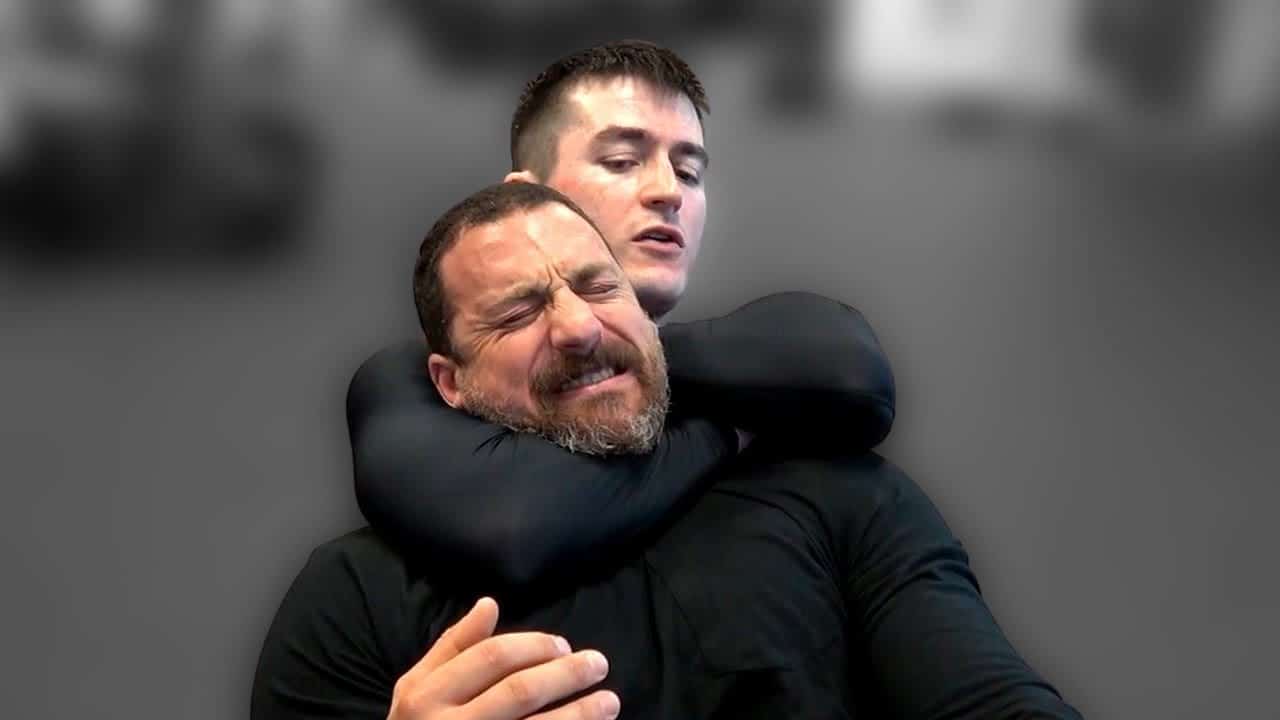
As seen from the outside
Mention Joe Rogan to many women, and you are guaranteed an eye roll. From the outside looking in, the broad appeal of figures like Joe Rogan, Andrew Huberman, and others can often be met with scepticism or even disdain, particularly from women. This reaction is understandable; Rogan’s approach to masculinity, featuring discussions on combat sports, hunting, and other traditionally ‘manly’ topics, may seem to be aligned with the more toxic elements of the manosphere. Additionally, there is a prevalent perception that everyone who puts on a pile of muscle becomes a meathead or that those who enjoy combat sports and firearms must be the stereotypical American redneck. However, this perception doesn’t fully capture the breadth of their influence.
While Rogan undeniably celebrates physical prowess and self-sufficiency, he frequently champions emotional intelligence, self-improvement, and open-mindedness. His extensive guest list includes scientists, philosophers, athletes, and mental health experts, fostering dialogues that cross ideological lines and encourage holistic personal growth. Similarly, Andrew Huberman’s emphasis on neuroscience and well-being showcases a modern approach to masculinity that values mental fortitude as much as physical strength. Thus, while some of their content may initially provoke eye-rolls, exploring their discussions more deeply reveals a broader, more nuanced approach to modern masculinity. There is a lot more subtlety beneath the surface, challenging stereotypes and advocating for a well-rounded personal development.
Of course, as they have grown, their messages have been monetised—this is no different from those who blazed trails before them, such as Tim Ferris, Anthony Robbins, and Deepak Chopra. The shift towards monetisation is a common pathway for many influential figures, reflecting both their popularity and the demand for their content.
I would also observe that as they grow, there is sometimes a shift in their own persona – as they start to believe their own hype – coming across as not so ‘interested to learn’ – as ‘proclaiming the truth’ – a tricky line to walk.
This shift can radically deform their perception of masculinity, often leading to an unhealthy conviction that they possess all the answers and are above critique. This misconception fosters an environment where toxic traits like arrogance and dismissiveness thrive, undermining authentic growth and development. To navigate this precarious path, it’s crucial to maintain humility and be perpetual learners, embracing growth in physical strength and emotional and intellectual maturity.
The journey to balanced masculinity involves acknowledging vulnerability as a pathway to strength rather than a weakness to be concealed. It means being open to changing perspectives and understanding that “being a man” can encompass much more than traditional stereotypes suggest.
Red Pill, Black Pill, Incells
The term ‘manosphere’ encompasses various online communities with differing views on manhood. Among these, the Red Pill and Black Pill movements often attract negative attention due to their association with toxic ideologies. Red Pill followers advocate for a “wake-up call” to realise the perceived injustices men face in modern society, frequently vilifying women and promoting controlling behaviours. Black Pill ideology, even more extreme, dwells on fatalistic beliefs that men are inherently doomed by societal and genetic factors, which fosters deep-seated misogyny and nihilism.
Incels, or involuntary celibates, share a similar strain of toxic masculinity, blaming women and societal standards for their lack of romantic success. This frustration often escalates into harmful rhetoric and even violent actions, as seen in several notorious cases of incel-related violence.
At the heart of the incel ideology is a deep-seated belief in strict gender roles and a sense of entitlement to women’s bodies. This is a manifestation of toxic masculinity that perpetuates harmful stereotypes and fuels misogyny. The dangerous combination of frustration, resentment, and perceived injustice can, in extreme cases, lead to tragic outcomes, further cementing the destructive nature of such beliefs.
It’s crucial to underscore that the issue extends beyond just incels. Similar toxic behaviours are evident in some segments of the so-called “manosphere,” where harmful advice and ideologies are dispensed under the guise of self-improvement. These communities often promote a worldview where women are dehumanised and viewed as obstacles or commodities rather than as equal partners in society.
Acknowledging the existence and impact of these toxic attitudes is the first step towards fostering a healthier understanding of masculinity. By offering and embracing alternative, positive models of manhood, we can create a cultural shift that values emotional maturity, respect, and equality. This transformation involves encouraging men to express vulnerability, cultivate empathy, and develop healthy relationships.
Understanding Toxic Masculinity: Bigotry and Sexism Unveiled
Toxic masculinity is an insidious force seeping into the lives of boys and men through cultural and social norms that glorify dominance, aggression, and emotional stoicism. At its core, it involves a set of behaviours and beliefs that include the suppression of emotions, the devaluation of women, and the rejection of anything perceived as “feminine.”
Bigotry and sexism are two of its most glaring manifestations. Men who have absorbed these traits are often taught that showing vulnerability or empathy is a sign of weakness. This leads to emotional suppression, which not only affects their mental health but can also result in aggressive behaviour as they struggle to express their true feelings.
Sexism, another toxic offshoot, leads to the objectification of women and an entitled attitude towards their bodies and lives. This mindset fosters harmful practices such as sexual harassment and even violence against women. The cultural narrative that men must be dominant and controlling perpetuates these issues, making it challenging for genuine equality to take root.
Understanding these components of toxic masculinity is the first step towards dismantling them. By recognising that these harmful behaviours are socially conditioned rather than inherent, men can begin to embrace more positive aspects of masculinity. It allows them to break free from these outdated norms and redefine what it means to be a man in contemporary society.

Combat Sports and Compassion: Balancing Toughness with Kindness
Engaging in combat sports like Brazilian Jiu Jitsu often brings images of physical strength, discipline, and toughness to mind. These activities foster not only physical prowess but also mental resilience. However, it’s essential to balance this toughness with compassion to break free from the constraints of toxic masculinity.
Combat sports can teach you humility, respect, and patience. Entering the ring or dojo isn’t just about overpowering an opponent; it’s about honouring the principles of fair play, understanding your own limits, and managing emotions like anger and frustration healthily. Recognising the person behind the opponent facilitates empathy and reduces the urge to dominate aggressively.
Beyond these values, combat sports enhance your capacity for resilience and strength in adversity. You’ll inevitably face challenging moments that test your skills and resolve in any match. Learning to take a hit—whether physical or metaphorical—and move forward is a crucial life skill, building a robust mental fortitude that extends far beyond the mat.
This resilience is cultivated every time you get knocked down and choose to get back up. It reinforces a mindset of perseverance and determination, driving home the idea that failure is merely an opportunity to learn and improve. Through repeated practice, you develop a thicker skin, enabling you to handle life’s challenges with greater ease and confidence.
Thus, don’t neglect your emotional growth while you sharpen your physical abilities. Building emotional intelligence—being attuned to your feelings and those of others—enhances your relationships and fosters a more inclusive and supportive environment. This balance enables you to become stronger, kinder, and more understanding.
The Desire to Protect: A Positive Outlet for Masculine Energy
The desire to protect is often rooted in men’s historical roles as guardians and providers. When channelled positively, this instinct can lead to commendable behaviour contributing to societal well-being. However, it’s crucial to differentiate this protective instinct from controlling behaviour that stems from toxic masculinity.
Being a protector doesn’t necessarily mean taking on physical threats. It can mean advocating for others, standing up against injustices, and supporting the lives of friends and family. For example, mental health has become a growing issue; by understanding the importance of mental well-being, men can protect and support those around them who might be struggling.
Physical strength and protection: Embracing activities like lifting weights and participating in combat sports can enhance physical strength and instil discipline. These physical outlets provide a means for men to connect with their bodies and cultivate a protective instinct in a non-violent way.
Emotional strength and protection: Developing emotional intelligence allows men to protect their emotional well-being and that of others. This means listening actively, showing empathy, and offering emotional support. By fostering open communication, men can help create environments where everyone feels safe and valued.
Ultimately, being a protector in the modern world requires a balance between physical prowess and emotional maturity. It’s about using your strength not to dominate but to uplift and defend those who are vulnerable. This balanced approach strengthens your character and contributes positively to the community, making the desire to protect a truly noble aspect of positive masculinity.

Emotional Intelligence: The New Standard for Manhood
Emotional intelligence, often abbreviated as EQ, is rapidly becoming a cornerstone for modern manhood. While physical strength and resilience have long been celebrated, they are increasingly complemented by the ability to understand and manage one’s emotions and those of others. This shift is pivotal in dismantling the rigid, harmful stereotypes of traditional masculinity.
Research suggests that high emotional intelligence can greatly enhance personal and professional relationships. Awareness of emotions makes you better equipped to handle stress and make thoughtful decisions. Additionally, understanding the emotions of those around you fosters empathy, which plays a crucial role in building inclusive, respectful communities.
So, how can you cultivate emotional intelligence? It starts with self-awareness. Reflect on your feelings and consider why you react in certain ways to specific situations. Journaling can be an effective tool for this, helping you track your emotional patterns and triggers. Next is self-regulation, which involves managing your emotions in healthy ways. Techniques such as mindful breathing, taking a break when you’re upset, and engaging in physical exercise can all contribute to better emotional control.
Empathy and social skills are the other key components of emotional intelligence. Practise active listening when talking to others, focusing fully on what they are saying without planning your own responses. This shows respect and deepens your understanding of their experiences and emotions.
Furthermore, developing emotional intelligence doesn’t mean suppressing your masculine traits; instead, it complements them. Strength and emotional depth can coexist. Embrace the complexity of human emotions and recognise that showing vulnerability can signify immense inner strength. This balance allows for a more holistic approach to masculinity, which is powerful and compassionate.
Adopting these practices contributes to a broader cultural shift towards a more positive, inclusive vision of manhood. Equipping yourself with emotional intelligence enhances your life and sets a valuable example for others, fostering a society where emotional maturity is celebrated alongside traditional masculine virtues.

Alternative Models of Manhood: Finding Your Own Path
One of the most empowering aspects of redefining masculinity is the freedom to find your own path. It’s about embracing individuality and rejecting harmful stereotypes. A man can be strong, compassionate, assertive, empathetic, disciplined, and flexible. You don’t have to fit into a narrow box to be proud of who you are.
Consider Positive Role Models
Look towards individuals who embody a balanced perspective of masculinity. Figures like Andrew Huberman offer a fresh take, combining physical fitness with mental well-being, pushing men to be resilient and emotionally intelligent. These role models challenge the toxic influences prevalent in the ‘manosphere,’ which often promote aggression and misogyny.
Define Your Own Success
Success doesn’t have to entail domination or accumulation of wealth. It can mean being a loving partner, a supportive friend, or an engaged community member. Embrace traits that foster genuine connections and personal growth. Whether you’re interested in art, sports, academics, or any other field, pursue what brings you joy without needing external validation.
Practice Emotional Intelligence
Building emotional intelligence is crucial. It involves acknowledging your own feelings and understanding the emotions of others. This makes for a better partner, friend, and more content, self-aware individual. It’s a practice that can be cultivated through reflection and mindfulness, shattering the outdated idea that men should suppress their feelings.
Engage in Healthy Competition
Competition can be a positive force when approached healthily. Engage in activities that challenge you physically and mentally, like sports or creative pursuits, but remember that the true measure of success lies in personal improvement and not necessarily in defeating others. Embrace the spirit of camaraderie and mutual respect.
Support Each Other
Encourage other men to leave behind toxic behaviours and adopt healthier ones. Create a supportive environment where open conversations about masculinity and its challenges are welcomed. By fostering a community rooted in mutual respect and kindness, the damaging aspects of traditional masculinity can be replaced with nurturing and constructive models.
In redefining masculinity, the key is to remain true to yourself. You can be robust and resilient while also being emotionally attuned and compassionate. These qualities are not mutually exclusive but are components of a well-rounded, authentic manhood.
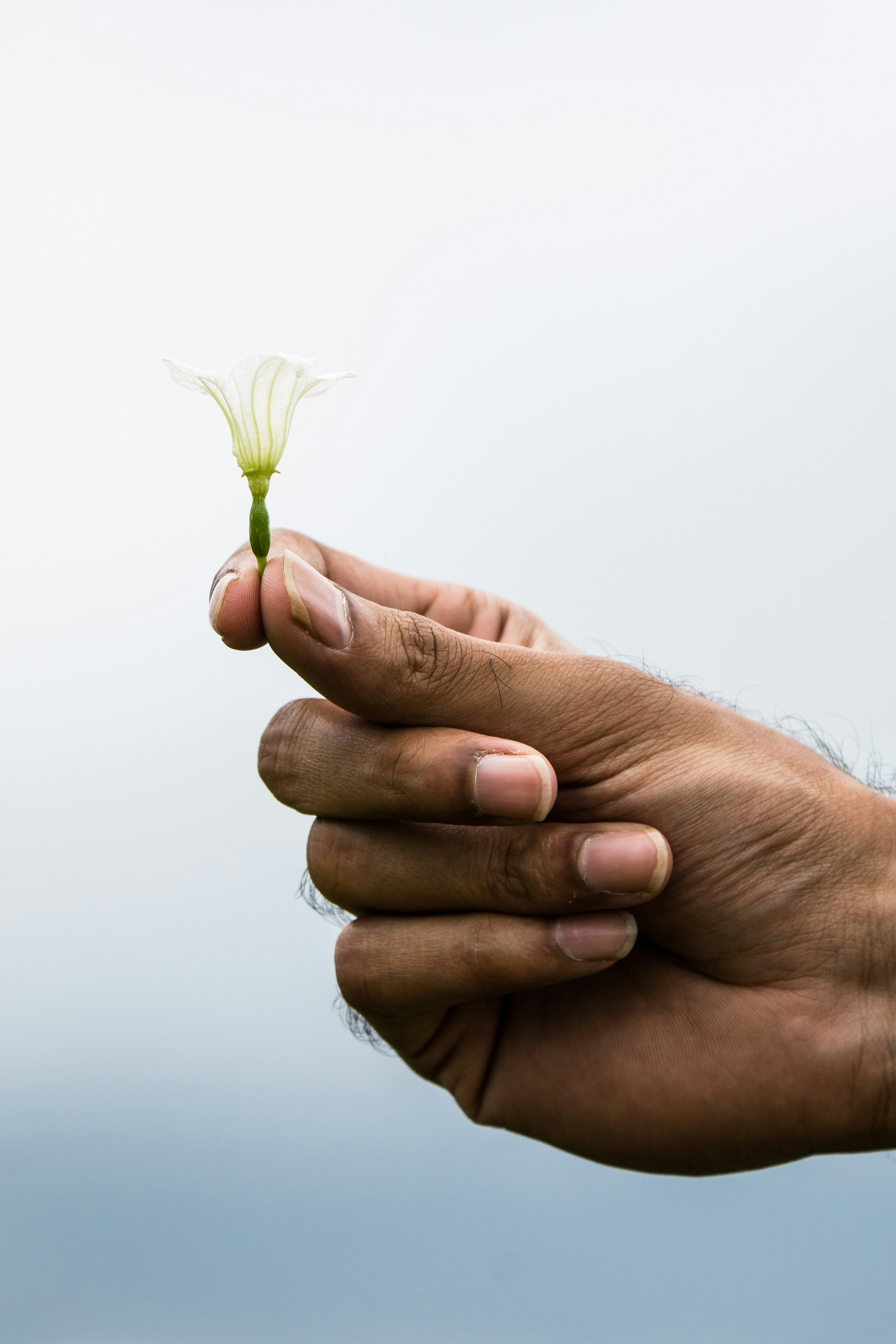
The Future of Masculinity: A Vision for Positive Change
The future of masculinity hinges on reshaping and redefining what it means to be a man in today’s society. At its core, this transformation involves balancing traditional strengths with emotional intelligence and empathy. Imagine a world where men are praised for their physical prowess and ability to protect and their capacity to nurture, communicate openly, and advocate for equality.
Positive masculinity can be a driving force for societal change. It diffuses toxic norms by teaching boys and young men that expressing emotions does not equate to weakness but to human resilience and strength. Programmes that positively integrate boys and men into society can foster this change, promoting respectful attitudes towards women and dismantling harmful stereotypes.
Creating marketing campaigns that challenge outdated norms around masculinity can also play a pivotal role. By showcasing diverse male role models who embody a range of positive attributes, these campaigns can inspire a new generation of men to embrace healthier masculinities. Highlighting stories of men who combine toughness with tenderness and ambition with compassion can set new benchmarks for manhood.
For this vision to take root, it requires collective effort and a commitment to change. Men must be encouraged to be proud of their masculinity, embracing strength and vulnerability. This journey towards positive masculinity is not about eradicating traditional masculine traits but refining and expanding them to include a broader emotional and social spectrum. Remember, being a “manly man” can mean different things to different people, and finding your path truly matters.
Ultimately, the future of masculinity will be brighter and more inclusive if individuality is celebrated over conformity. By fostering environments where boys and men can express their true selves without fear of judgment, we pave the way for a healthier, more harmonious society. This is the blueprint for change, where positive masculinity becomes the norm, and every man can uniquely contribute positively to the world around him.
My Journey in Jiu Jitsu: Embracing the Path from Four Stripe White Belt to Blue
As you progress, you’ll realise that each milestone isn’t a final destination but just a checkpoint along a much longer path. You begin to see that every technique you learn reveals several others you haven’t yet mastered. This is, perhaps, the beauty of Jiu Jitsu:
“The more you know, the more you realise how much you don’t know.”
This article will explore how to become more familiar and comfortable with your practice while acknowledging that true mastery is still a distant horizon. Whether in your first few months of training or just steps away from your next belt, there’s always more to learn and room to grow. Let’s dive into the art of Jiu Jitsu together and embrace the endless journey of discovery and improvement.
Brazilian Jiu Jitsu (BJJ) belts typically progress from white, blue, purple, brown, to black
Achieving a blue belt can take anywhere from 1 to 3 years of consistent training
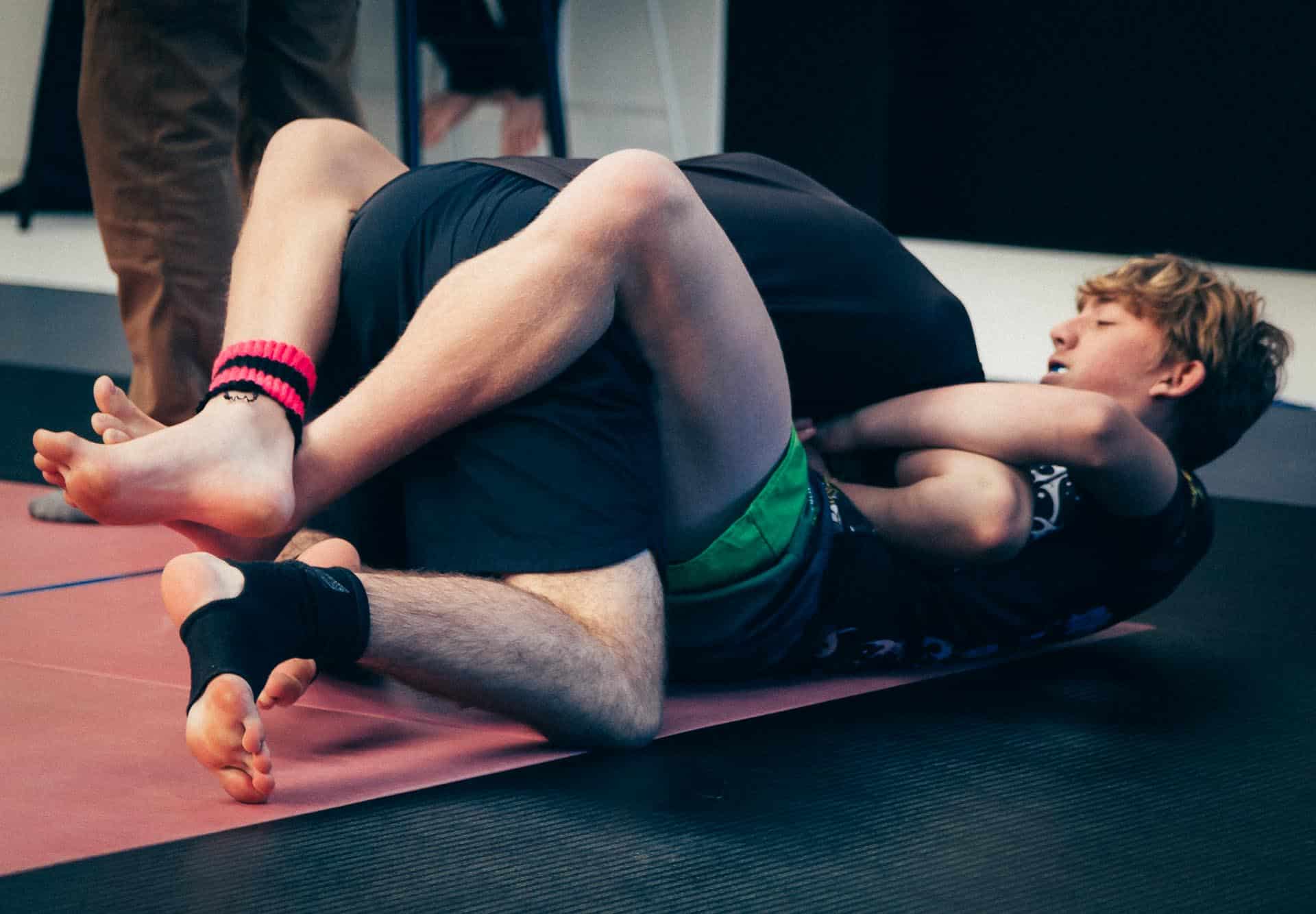
The Beginning: Stepping onto the Mats
My journey began with a sense of trepidation, stepping onto the mats for the first time with a mixture of excitement and nervousness. The unfamiliar environment, filled with seasoned practitioners executing intricate techniques easily, was inspiring and intimidating. Yet, the supportive nature of the Jiu Jitsu community quickly alleviated my apprehensions, assuring me that every expert was once a beginner.
From the very first class, I was drawn in by the complexity and depth of the art. Learning the basic positions and movements felt like unlocking a new form of communication, where each position told a story and every transition held a lesson. It wasn’t just about physical prowess but a mental challenge, requiring patience and a willingness to embrace vulnerability.
My initial goal was simple: survive each class and start understanding the foundational concepts. The idea of mastering even one technique seemed distant and daunting. However, the once overwhelming puzzle pieces began to fit together with every practice session. I started to appreciate the meticulous craftsmanship needed to execute techniques effectively and the importance of drilling fundamentals.
Despite the occasional frustration of not getting a move right or being submitted repeatedly, there was a profound sense of accomplishment in small victories. Each session became a stepping stone, gradually building my confidence and familiarity with the intricacies of Jiu Jitsu. Although the path ahead was long, the initial steps on the mats laid a critical foundation for my journey, teaching me resilience, humility, and the joy of continuous learning.
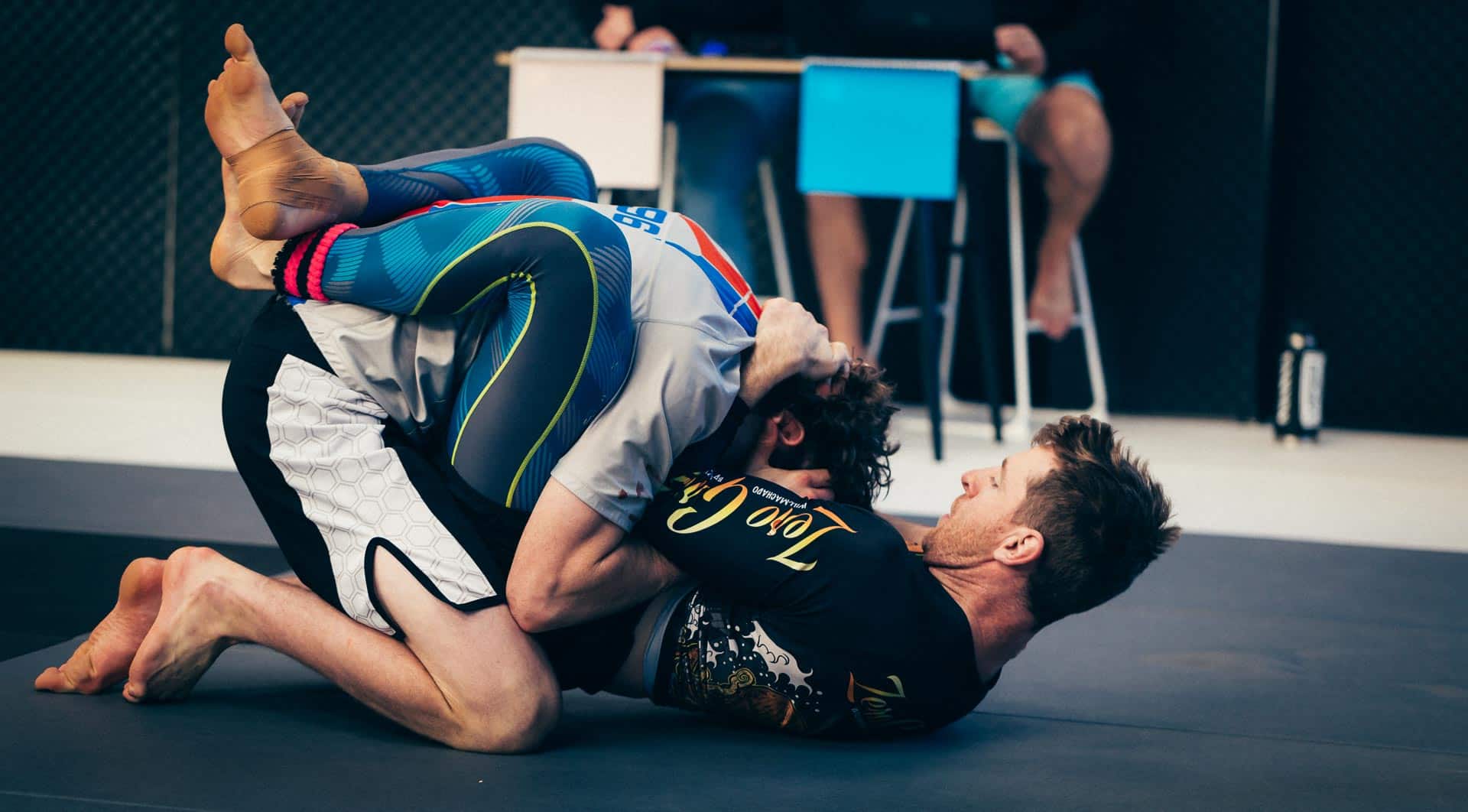
Consistency is Key: Maintaining Regular Practice
When I first stepped onto the mats, I quickly learnt that consistency would be my greatest ally. Jiu Jitsu, much like any other demanding discipline, requires a commitment to regular practice. It’s not just about showing up; it’s about showing up repeatedly, even when motivation is low and the body is sore. Every class, every roll, every drill brings me one step closer to my goals, reminding me that progress is a marathon, not a sprint. That sense of routine builds not just physical skill but mental resilience as well.
Developing a consistent training schedule was challenging at first. We all have lives outside of our passions. In my case, I work full time over the other side of the city and have split custody of the kids and a new partner.
One piece of advice that resonated with me was the importance of tracking consistency. Keeping a training journal where I documented sessions, techniques learned, and personal reflections helped me retain information and recognise patterns in my training. It provided a clear visual of my journey, highlighting my advancements and areas needing improvement.
Fall down seven times, get up eight.
– Japanese Proverb
Moreover, seeking regular feedback from my coaches and training partners has been invaluable. Constructive criticism might sting, but it’s crucial for growth. By consistently engaging with my Jiu Jitsu family, I’ve been able to refine my techniques and strategies, making incremental improvements that might otherwise have gone unnoticed.
Ultimately, consistency isn’t just about physical presence; it’s about mental engagement and a willingness to embrace the grind. Each mat session adds to a rich tapestry of learning, an ongoing narrative of perseverance. As I edge closer to earning my blue belt, I remind myself that consistency will remain my steadfast companion, guiding me through each stage of this enriching journey.
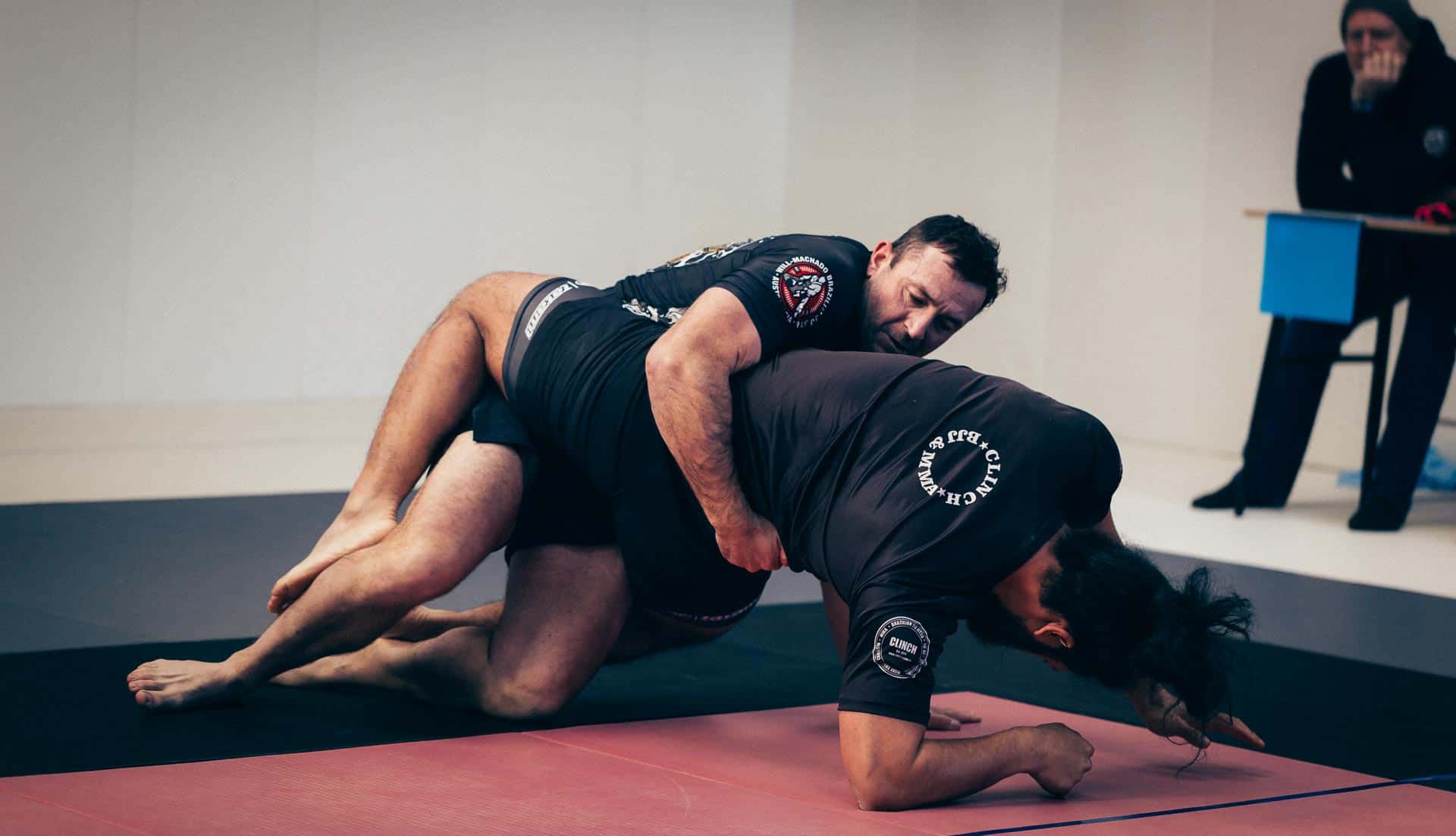
Overcoming Plateaus: Pushing Through Challenges
It’s no secret that progress in Brazilian Jiu-Jitsu isn’t linear. Often, you might feel like you’re stagnating, caught on a plateau with no clear way forward. I’ve had my share of those disheartening weeks where my growth seemed to halt, each roll reflecting the same shortcomings. Yet, each plateau is a lesson in disguise.
During these times, mental strength and perseverance become paramount. You must remind yourself that everyone faces these hurdles. Some of the most accomplished practitioners have waded through seemingly endless periods of stagnation. To push through, I’ve found it helpful to break down my goals into more manageable milestones. Celebrating these small victories – perfecting a sweep or finally escaping a troublesome guard – provides the much-needed motivation to keep going.
For example – last year, I attended a John Wills seminar – in which one of the main drills we did was a Darce, ‘Marce’, Anaconda flow. For the next year, I repeatedly tried implementing them during the roll in the intermediate classes and open mats. After about nine months, I started to hit them! I still suck at finishing them – but it’s getting there! In this year’s seminar, he taught us a sweep from top control over turtle – and guess what – any opportunity I get, I am trying to get the sweep.
This is not meant to be focus in exclusion of anything else, but simply choosing one or two things to practice, track and celebrate improvement on.
Ultimately, the journey through each plateau shapes your resilience and determination. Every challenge conquered, every skill refined, brings you one step closer to becoming a better grappler and a stronger individual. Remember, the struggle is a crucial part of the process, and each obstacle surmounted is a testament to your unwavering spirit.
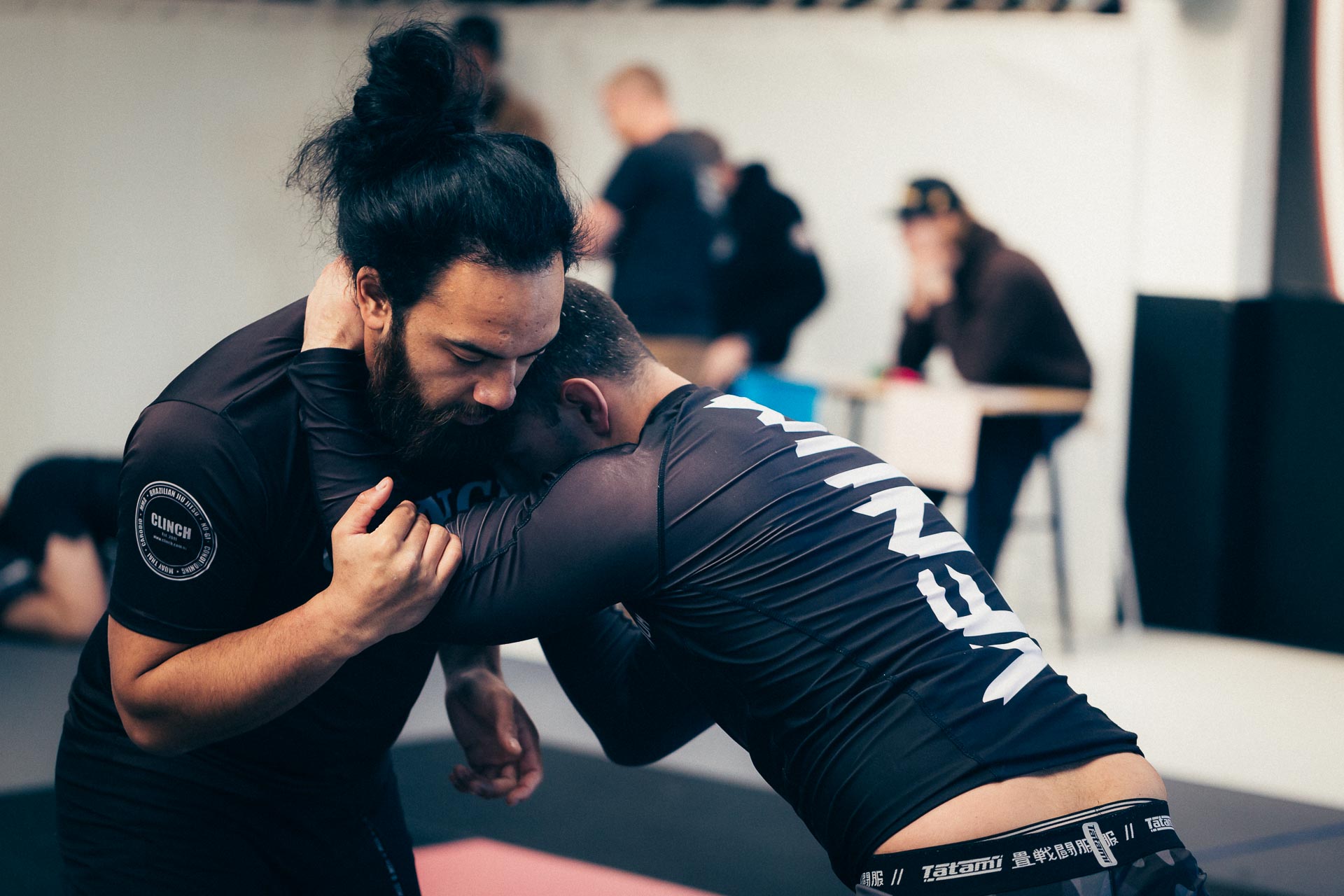
The Importance of Sparring: Learning from Every Roll
Sparring, often referred to as “rolling” in Jiu Jitsu, is where theory meets practice, and the intricacies of the art form unfold. I remember my first few rolls vividly; they were a whirlwind of confusion, excitement, and a dash of nervousness. Each sparring session since then has provided a uniquely humbling experience, mirroring my progress and areas needing improvement.
One of the most profound lessons I’ve learned from sparring is that it’s not about winning or losing but learning. Every roll is an opportunity to test techniques under pressure, to see what works and what doesn’t. It’s like a live-action puzzle where pieces constantly shift, demanding creativity and adaptability. The beauty of sparring lies in this dynamic nature; what might work flawlessly in one session could fail spectacularly in the next, urging a deeper understanding and refinement of the techniques.
Moreover, sparring teaches resilience. There have been many moments when I was stuck in seemingly inescapable positions, feeling the weight of my partner’s control. These situations, challenging as they are, have sharpened my defensive skills and instilled a calmness under pressure. As Roger Gracie emphasises, building a solid defence is crucial. Surviving and escaping tough spots boosts physical capability and fortifies mental toughness, which is invaluable both on and off the mats.
I get beaten. A lot. And that is fine. Intentional even – I would prefer to roll with the senior belts, who can both allow you to get through their defences to practice attacking and happily demolish you with pressure to force you to get comfortable and try to escape. I normally don’t!
Another critical aspect of sparring is the feedback it provides. After every roll, I like to take a moment to reflect on my performance. What techniques did I attempt? Which ones succeeded or failed? How did my partner respond? Recording and reviewing videos of my sparring sessions has become an essential part of my training routine. This practice allows me to analyse my movements, spot patterns, and make necessary adjustments, ensuring a continuous learning process.
However, perhaps the most enriching part of sparring is its connection with training partners. Each role is a shared journey, a mutual challenge where both individuals push, test, and ultimately help each other grow. Learning from every role means not only improving my own game but also contributing to the betterment of my partners. This communal growth embodies the spirit of Jiu Jitsu, reinforcing the notion that we rise by lifting others.
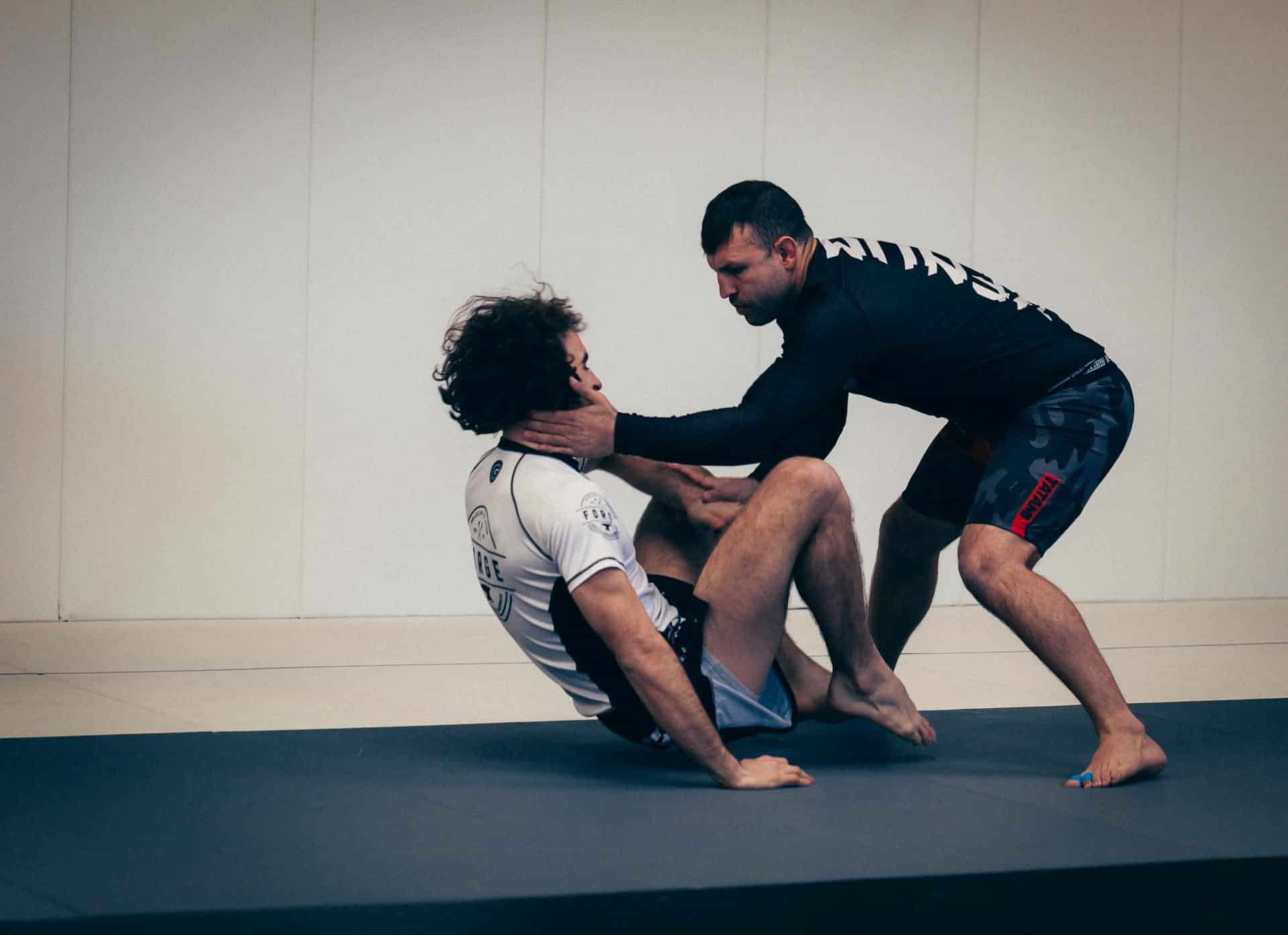
Mental Toughness: Staying Motivated and Focused
I have had a few injuries already. I will no doubt have a few more, and I have had more than a few days where my body didn’t feel like going to training. However – overtraining notwithstanding – my ‘head’ has always been keen. Even when I feel physically or mentally ‘down’, I have always looked forward to a good training session.
Despite the occasional bumps and bruises, I’ve learned that pushing through these lows and showing up on the mats is often the best remedy. Every training session, even the difficult ones, brings a sense of accomplishment and the reassurance that progress is being made, however incremental it seems. There’s something deeply satisfying about mastering a technique or overcoming a challenge that once seemed insurmountable.
During these trying moments, I’ve appreciated the mental toughness Jiu Jitsu instils. The discipline to keep going, especially when every fibre of your being is urging you to take a break, nurtures a resilience that permeates other aspects of life. Each session teaches me something new about my physical and mental limits and, more importantly, how to surpass them.
Additionally, injuries and setbacks have taught me the value of listening to my body and the importance of recovery. Rest is not a weakness; it’s a strategic pause, a time to rebuild and return stronger. Balancing hard work and smart rest has been a crucial part of my journey towards my blue belt.
In sharing my journey, I hope to convey that each step, each small victory, and each setback is an integral part of the process. The beauty of Jiu Jitsu lies not just in the physical prowess it develops but in the mental fortitude it fosters. As I look ahead, eagerly anticipating the next stripe and belt, I remind myself this is just the beginning. There is a vast and deep ocean of knowledge yet to explore, and every day on the mats is a new adventure.
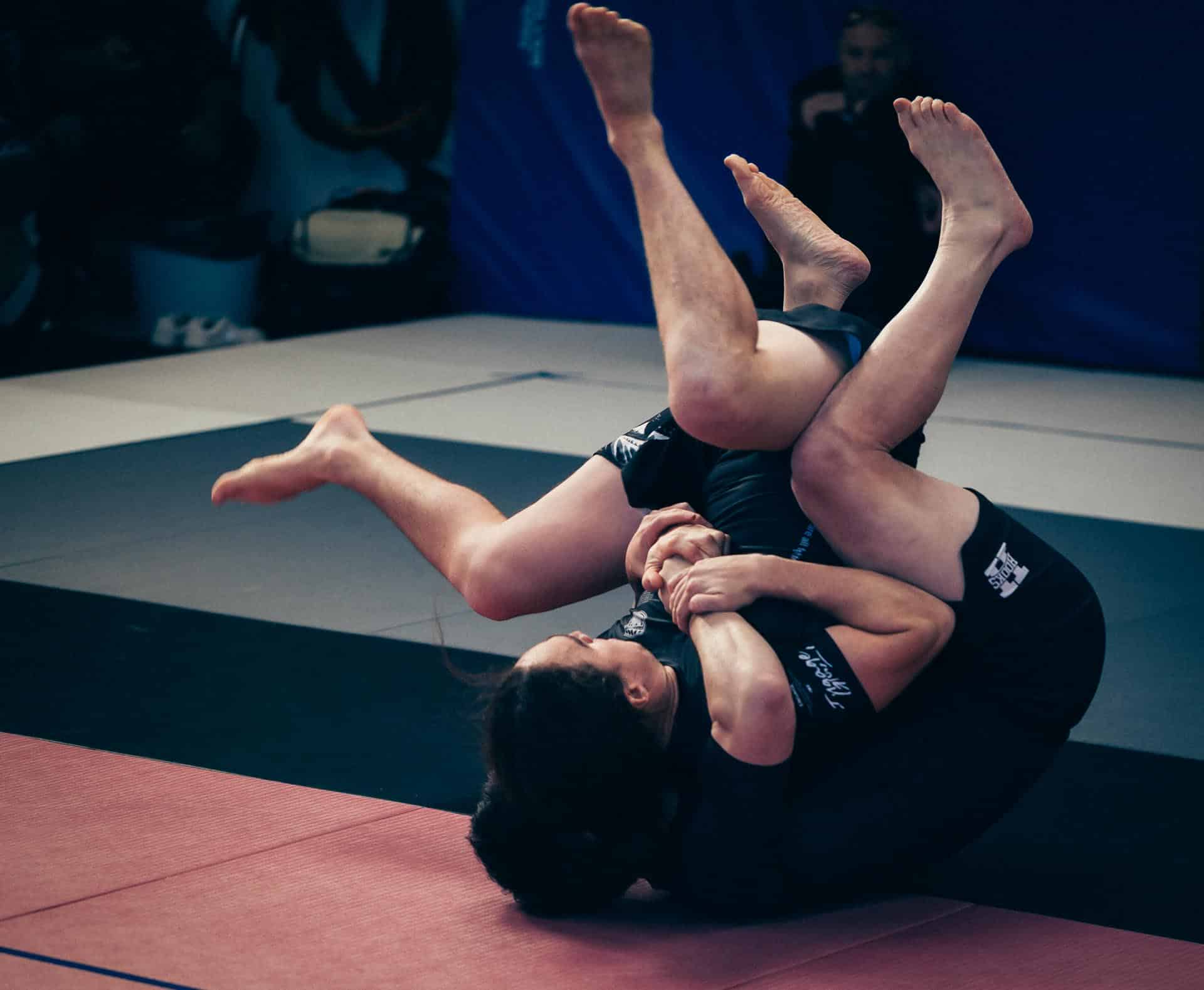
Mental Health: Working on staying engaged beyond disorder
Some of you may have read previous articles where I talked about my ongoing therapy – specifically, my dissociative personality disorder. Essentially, this is my learned response of ‘stepping outside of my body’ when stressors come on me, generally emotionally.
Jiu Jitsu has allowed me to turn towards and embrace this discomfort progressively. I have found myself at certain points (under heavy pressure from a big guy!) where I start dissociating from my physical body – ‘switch off’ and ‘sit’ the rest of the roll out, or just let myself get submitted.
Now, I am learning to stay present, breathe, work through the discomfort, and figure a way out of it. Oddly enough – the ability to do this while being physically pressured has also helped me do the same thing when the pressure is emotional.
The parallels between the physical and emotional realms of Jiu Jitsu are astonishing. Each time I leave the mat, drenched in sweat and often nursing a few bruises, I am acutely aware of how these physical trials mirror my daily life struggles. During these rolls, where I’m faced with seemingly insurmountable challenges, I realise the importance of persistence and a calm mind. The ability to pause, assess, and strategize is invaluable in Jiu Jitsu and life.
Embracing Humility: Learning from Mistakes
One of the most profound lessons I’ve learned is embracing failure. Every failed sweep, every submission I couldn’t escape from, progressively taught me patience and resilience. It’s easy to get disheartened when you’re trapped in an uncomfortable position, but it’s in these moments that true growth happens. Reflecting on these experiences, I often find that the discomfort of being out of my comfort zone is where the real magic. It reminds me of the strength I have within, urging me to push through, grow, and ultimately become better both on and off the mat.
Embracing a growth mindset has been transformative. When things don’t go as planned, instead of seeing it as a defeat, I now view it as an opportunity to learn and adapt. This shift in perspective has been crucial in helping me progress towards my blue belt and enhancing my everyday life. By keeping a training journal, I document my sessions, techniques learned and moments of personal insight. This practice of self-reflection allows me to acknowledge my progress while continually seeking areas for improvement.
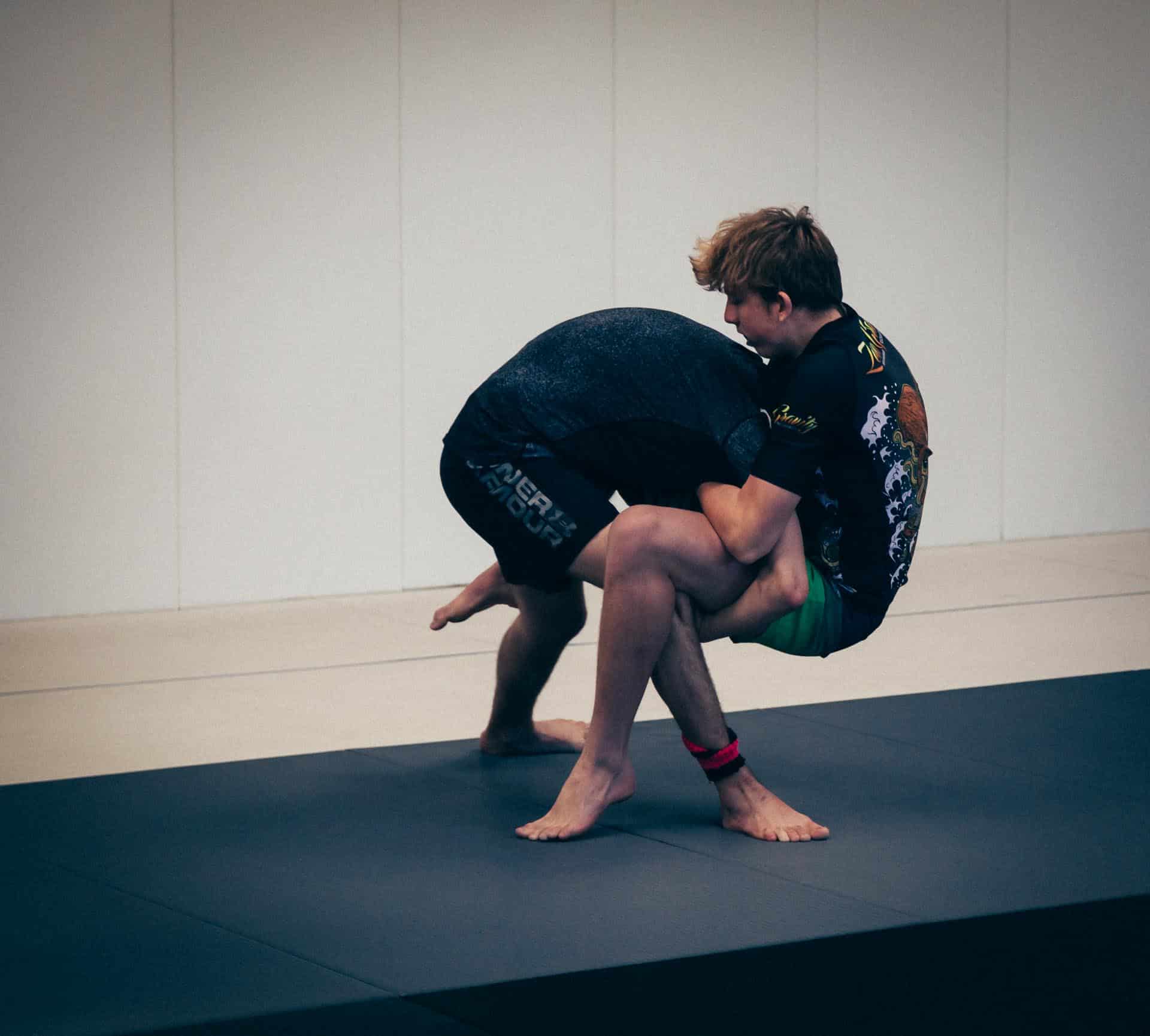
Physical Conditioning: Strength and Flexibility
Physical conditioning is a cornerstone of my Jiu Jitsu journey. It’s not merely about surviving the rigorous rolls but thriving and excelling in every session. When I first started, I quickly realised that my fitness level was only a starting point. Like many martial arts, Jiu Jitsu demands raw strength and a nuanced blend of power, agility, and resilience. This sport pushes every muscle in ways I hadn’t anticipated, from the explosive transitions to the prolonged holds that test even the steadiest grip.
I have lifted weights on and off for most of my life; in addition my years of Tai Chi, I have been aware of and remained ‘relatively’ flexible. However, nothing could have prepared me for the intense physical demands and mental challenges of Jiu Jitsu.
As I immersed myself deeper into Jiu Jitsu, each training session pushed me beyond my comfort zone, forcing me to confront my limitations. The complexity of techniques and the necessity for precise movements required a level of focus and discipline that was humbling and invigorating. I quickly realised that while my previous fitness routines provided a solid foundation, Jiu Jitsu demanded more – strength, agility, balance, and resilience.

Setting Goals: Paving the Way to Blue Belt
I am realistic. Not every grading results in another stripe or belt. I have ‘dropped’ a grading before – and quite possibly won’t get my blue belt at the next. That’s fine. Jiu Jitsu is probably one of the slowest martial arts regarding the progression of belts.
Setting realistic goals is paramount as I navigate my Jiu Jitsu journey. While it’s tempting to focus solely on earning that next stripe or belt, it’s crucial to remember that progress in Jiu Jitsu is far from linear. Embracing the unpredictability of the journey allows me to set achievable and meaningful milestones. These can range from mastering a particular technique, improving my defence – inspired by the wisdom of Roger Gracie – or simply dedicating myself to consistent training. Each small victory, whether a successfully executed move or a hard-fought roll, becomes a building block on the path to greater accomplishments.
Competition goals also play a significant role in my growth. Entering a tournament might seem daunting, but it’s an invaluable experience that tests my skills under pressure. Competing pushes me out of my comfort zone, forces me to adapt quickly, and sharpens my techniques. Win or lose, the lessons learned in competition extend far beyond the medals; they influence my overall approach to training and my understanding of Jiu Jitsu.
Ultimately, it’s about setting goals that encourage continuous improvement while acknowledging the unique challenges that come with this martial art. I keep motivated and engaged by focusing on my progression and celebrating personal achievements. The goal is not just to achieve the blue belt this year but to relish every step of the way, understanding that each training session each challenge overcome, is a testament to my growth and dedication.
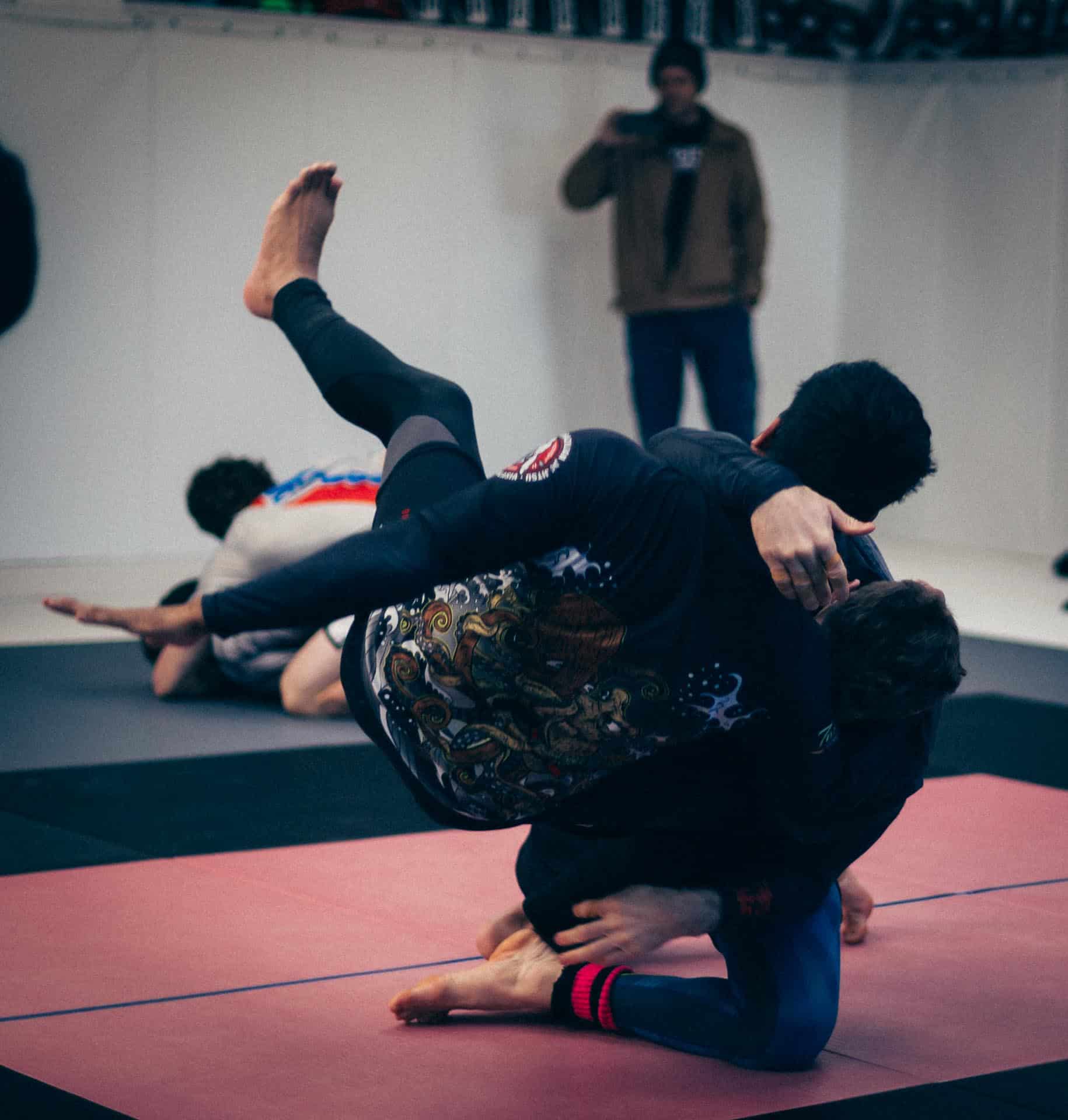
Patience and Perseverance: Trusting the Process
Reflecting on my journey so far, one thing becomes abundantly clear: patience and perseverance are not just virtues but necessities in Jiu Jitsu. There are moments when progress feels elusive, where the techniques I’ve drilled countless times seem to escape me at the crucial moment. In these moments, I remind myself to trust the process to believe that each stumble is a stepping stone towards improvement.
Progress in Brazilian Jiu-Jitsu is far from linear. I’ve had weeks, even months, where it felt like I was stuck at the same level, unable to advance. During these plateaus, it’s easy to feel frustrated and disheartened. However, these periods are often where the most significant growth happens, albeit beneath the surface. It’s about pushing through these challenges and committing to consistent, deliberate practice.
Seeking regular feedback from coaches and more experienced training partners has been invaluable. Their insights have often illuminated subtle adjustments I can make, helping me refine my technique and approach. This continual learning and adaptation process embodies the growth mindset essential to thriving in Jiu Jitsu. It’s not just about achieving the next belt but about savouring the journey and the incremental improvements along the way.
Setting short-term and long-term goals has also been crucial to my development. Celebrating small victories, like perfecting a new technique or surviving a tough spar, has motivated me. These milestones remind me of my progress and fuel my commitment to the art.
Ultimately, embracing patience and perseverance means trusting the process and understanding that each training session, each setback, and each triumph are integral parts of the journey. As I work towards my blue belt, I remain mindful that this path requires dedication and an unwavering belief in my capacity to grow and improve.
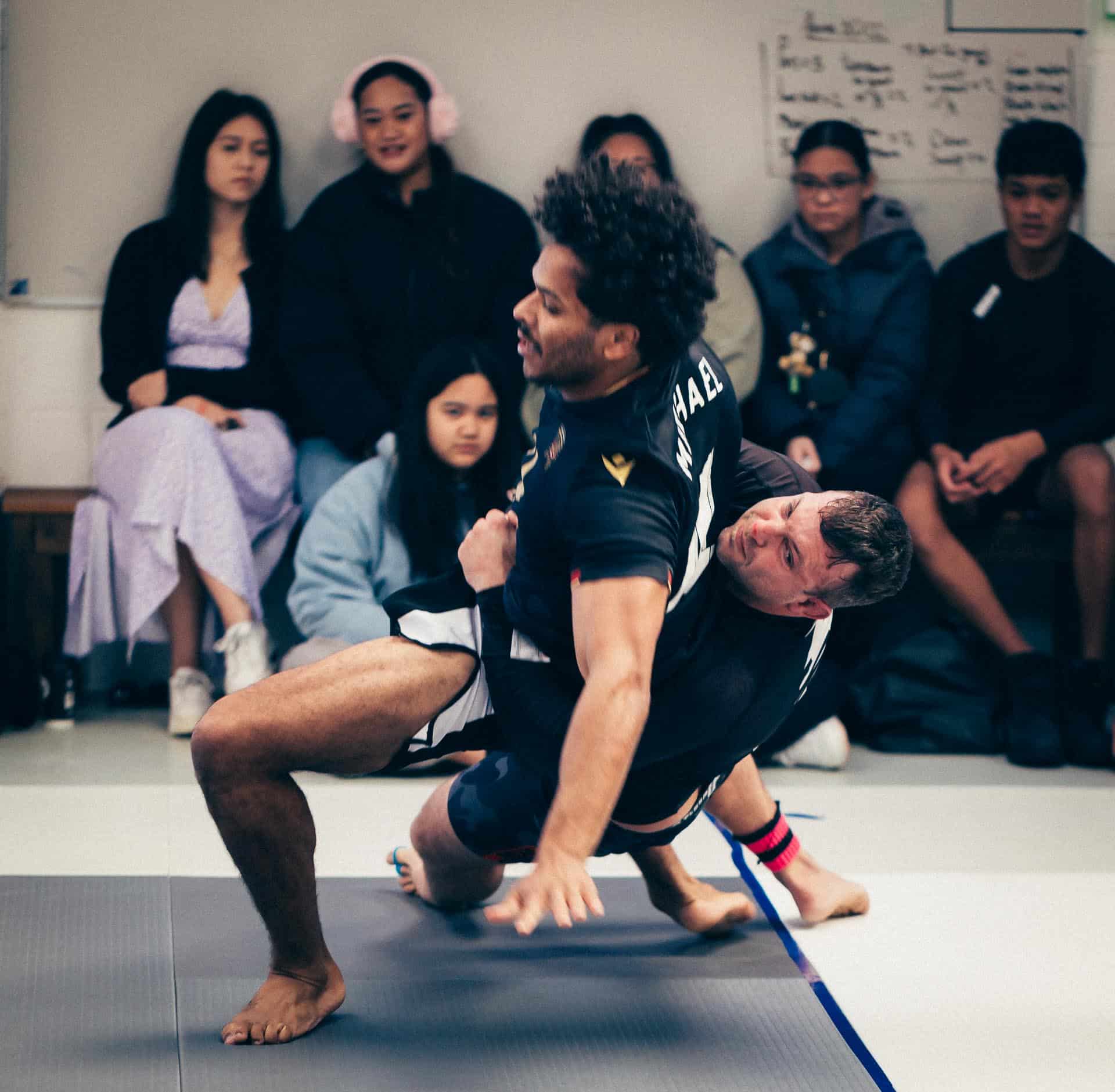
Future Aspirations: Looking Beyond the Blue Belt
As I am on the cusp of earning my blue belt, it’s impossible not to dream about what lies beyond. The blue belt is often heralded as the entryway to truly understanding Jiu Jitsu, where foundational skills are honed, mistakes from the white belt days are rectified, and the journey toward mastery begins in earnest. Once donned, the blue belt represents an evolving challenge: a commitment to a deeper level of learning, adjusting strategies, and embracing a more analytical approach to each roll.
While my immediate goal is to secure my blue belt, I’m acutely aware this achievement signifies just the beginning. I aspire to develop a rock-solid defence, mastering escapes from various positions. This will bolster my confidence and provide a sturdy platform to launch my offensive game. I am particularly excited about immersing myself in the intricate web of techniques, from sweeps to submissions, and refining my approach to each. The complex movements and strategies that once seemed daunting are now slowly unveiling their secrets, layer by layer.
Another aspiration is to deepen my understanding of the philosophical and mental aspects of Jiu Jitsu. Beyond the physicality, this martial art promotes a growth mindset, teaching patience, resilience, and humility. Each session on the mats is an opportunity to embody these values, confronting personal limits and pushing beyond them. My encounters with frustration, failure, and triumph weave together, forming a tapestry of personal growth that extends well beyond the dojo.
Finally, I envisage contributing to the Jiu Jitsu community as I progress. Whether mentoring new white belts, sharing insights, or fostering a supportive environment, being part of others’ journeys is incredibly rewarding. The sense of camaraderie and shared purpose within our community is profound, and I aim to nurture and strengthen it. Ultimately, the journey through the belts, towards the coveted black belt, is not solely about personal accolades but about growing alongside others, enriching our collective experience in this beautiful, challenging, and endlessly fascinating martial art.
Firearms Safety – forming better gun handling habits.
Understanding the 7 basic rules
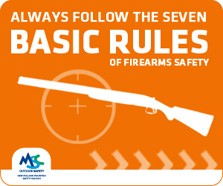 For the purposes of this article – we are focusing on the first three of the seven.
For the purposes of this article – we are focusing on the first three of the seven.
- Treat every firearm as loaded
- Always point firearms in a safe direction
- Load a firearm only when ready to fire
While all the rules are important, these are the three that care most directly applicable to the way we physically handle and manipulate a firearm.
Here is the simple truth – if a firearms user always follows the clearly laid out rules – there is no way that injury or death can occur – unless it is intentional. This holds true with a rifle, a shotgun or a pistol. No matter what country you are in, there is going to be some derivative of the above.
The mechanics of a firearm
For a firearm to discharge – a very specific, interdependent sequence of events needs to happen. A firearm needs to have it’s action fully functional, it needs to have live ammunition in the chamber, the firing pin needs to be ready to the the primer with force, the safety systems need to be off and the user needs to depress the trigger, causing the firearm to go through it’s firing sequence and causing the primer to ignite the powder which in turn creates the pressure required to expel the projectile from the end of the barrel.
If one of these processes is removed from the sequence a firearm cannot fire. On the assumption you have a correctly functioning firearm (and not maintaining it that way is negligence); If there is no bolt in a firearm, it can’t fire. If there is no ammo in the firearm, it can’t fire, if there the trigger isn’t pressed, it can’t fire and if it isn’t pointing in the direction of someone, it can’t directly hit them.
How do the rules translate into firearms handling?
Trigger Control
As we have already covered – a firearm is not going to go off unless it is loaded and you pull the trigger (malfunctions withstanding). So keep that finger well away from the trigger until you are ready to fire.
This means should you get bumped, slip, cough or otherwise have that finger disturbed – the trigger can’t get depressed and the gun can’t go off. This is critical if you know there is a round in the chamber and still important even if you think there isn’t. Why? Habit.
The habitual position for your finger should be off the trigger. The only way you form this habit is by always doing it. If you have that finger on trigger, while goofing around and handling the firearm, you are programming your subconscious mind with a bad habit. Do you need the trigger on the finger? No. Then get it off it. Muscle memory is a powerful thing – I have watched people who are new to shooting putting their finger on the trigger after being told not too – because their conscious mind is busy trying to figure out things like loading the gun, aiming, breathing, their sub-conscious mind takes over the muscles and the finger ends up where it habitually wants to go – often on the trigger. We need to break that muscle memory associate through strict control.
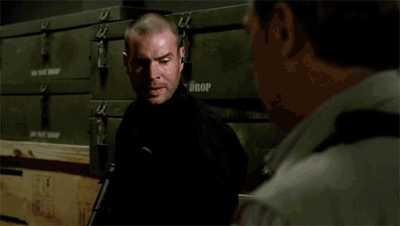 I don’t know why so many people pick up a gun and find their finger on the trigger – I guess it’s partially due to TV, where for a very long time that’s simply what was shown – for many people the only part of gun handling they have observed is the actual act of shooting – so it seems normally to pick up a gun and be ready to go. It’s only as people become more educated around the risks and the safe handling that we start to understand the need to keep our finger away from the trigger.
I don’t know why so many people pick up a gun and find their finger on the trigger – I guess it’s partially due to TV, where for a very long time that’s simply what was shown – for many people the only part of gun handling they have observed is the actual act of shooting – so it seems normally to pick up a gun and be ready to go. It’s only as people become more educated around the risks and the safe handling that we start to understand the need to keep our finger away from the trigger.
The only time your finger should be near the trigger is when you are on target (live or dry) and ready to go through the trigger pulling process.
Muzzle Control
Never point a gun at anything you are unwilling to destroy.
Despite what the movie might have told you, a bullet can’t bend mid flight.1 Sure, ricochets occur, but that’s another matter.2
If you are always are aware of where the muzzle is pointing and never point it towards anyone or anything that you are unwilling to shoot – then you start forming a habit that will keep you aware of your guns positioning at all times.
I have handed firearms to people (generally first timers) and been immediately swept by them. They don’t know any better – as they manipulate the firearm they are simply not yet always aware of the direction that the barrel is pointing in. As you develop more awareness, whether you are chamber checking, manipulating a bolt, adjusting the scope, at the same time, you are aware what the handling is doing in regards the the direction of the gun.
I am always immediately nervous about someone who waves a firearm around while talking, gesticulating with the gun. The muzzle control simply isn’t ingrained – as you are likely to get sweeped at some point. Does it mean they are definitely going to shoot you? No. Of course no, but the margin of error has just significantly decreased.
Why so paranoid?
A common observation that comes into play is this one – ‘but we know the gun is unloaded!’.
It may be the case that you are, in your head certain a firearm is unloaded. But people get that wrong. People have died getting that wrong. If a Navy Seal can get it wrong and shoot himself in the head. So can you. But then, how many rules did he break? In his case – two of the seven. He didn’t treat the firearm as loaded, regardless of what he thought it’s state was, and he didn’t point it in a safe direction.
Also – malfunctions happen. Though very, very rare, there is a mechanical capacity for a live round to remain in the chamber, even after you think you have removed all the ammo. That’s why when you unload a firearm, you don’t simply ’empty the chamber’ – you need to physically (through eyes and or fingers) check it’s empty. Don’t assume. Be paranoid.
However – let us assume for a moment you have a firearm that is actually loaded – maybe a round stuck, maybe you were just handed a gun that you have been told was empty but actually isn’t, there are multiple reasons this could happen. If we are following the basic safety rules, there is still no way someone can get injured.
How is that?
Well. Because you are treating every firearm as loaded, you aren’t going to be putting your finger anywhere near the trigger, unless you are on target and wanting to discharge the firearm. You aren’t going to be pointing the firearm at someone, including yourself because 1. you are treating it as loaded and 2. rule number 2. Finally, the next time you check the state of the firearm, you are going to realise it is still loaded, clear it, and feel like an idiot. Better to feel stupid than to injure someone.
Potential consequences demand it.
The results of something going wrong can be death. It is easy to blase about gun safety – but that can only be the case if you haven’t really accepted the responsibility of what can go wrong by doing so. People die. A healthy paranoia – a conscious hyper-awareness of our gun handling is required – because that provides us with an inbuilt margin of error when we get in a stressful situation.
A margin of error
Stress causes breakdowns in our better judgement. We all have momentary lapses of judgement.
Walking through the bush, if your ‘habit’ is being aware of where your muzzle is at all time, then you are going to be thinking about this as your walk around or over obstacles, push your way through scrub and generally make your way through uneven ground. If this is something you are blaise about normally, then that muzzle could end up pointing in all manner of directions – the most concerning of course being, directly at the person behind you.
However, say you do, momentarily sweep someone, while tripping on a root, sliding down a bank or one of the many other things that can and does happen out in the bush – well, because you have other habits in place – like not having a finger near the trigger, not having the firearm ready until ready to fire and utilising the safety features of your firearm, you still have a margin of error available to you that will ensure that nothing dangerous can happen.
What happens when we don’t have the proper habits instilled in ourselves is that we drastically reduce this safety margin around a negligent discharge. If we don’t have strict trigger discipline – we may find that our finger tends to creep towards the trigger as we get excited that there might be a big stag around the next corner. If we don’t have strict muzzle discipline, we might suddenly realise we have climbed up over a fallen tree and have our mate directly in line with a bullet.
It all in your attitude
Yeah, but I do have good trigger control most of the time!
 Whoopty-shit – that’s not acceptable – it’s the time you don’t have that awareness that you are going to have an incident. That’s the point! By maintaining the strictest of habits and an attitude that only 100% of the time is enough, that 1% that IS going to happen (stress) will only be 1% – not 5%, not 10% of the time – additionally, because you are acutely aware (paranoid) about the state of the firearm, the direction of the firearm and the positioning of your finger, that margin of error is big enough to avoid issues.
Whoopty-shit – that’s not acceptable – it’s the time you don’t have that awareness that you are going to have an incident. That’s the point! By maintaining the strictest of habits and an attitude that only 100% of the time is enough, that 1% that IS going to happen (stress) will only be 1% – not 5%, not 10% of the time – additionally, because you are acutely aware (paranoid) about the state of the firearm, the direction of the firearm and the positioning of your finger, that margin of error is big enough to avoid issues.
The problem is, people develop a survivorship bias – that is, thinking along the lines of ‘well I have always done it this way and never had an issue, so I don’t need to change anything’. Let’s be clear here. You only need to have an incident once for the repercussions to be permanent. People get away with plenty before the final incident that catches them out.
How do I learn them?
Join a range and go practice
If the only time you pick up the rifle is to go out hunting, you have an issue. You need time with a firearm without the additional stress of actively hunting to become familiar with the firearm and to install safe habits while handling it. Nothing beats having someone else calling you out (or the perceived embarrassment of someone calling you out) to start the process of a healthy paranoia about firearms handling.
A range allows you to focus on the handling and shooting of a firearm – habitually going through the process until it becomes second nature.
Totally apart from the marksmanship advantages practising your shooting gives you, it means you are also handling a gun around other people – which encourages responsibility.
This is not to say everyone at a range has safe handling. I find there is two groups – the new and the ‘experienced’ that need to be watched. The ‘experienced’ simply means someone has been doing something for a long time. Not necessarily the right way. The old fellas are also known to become complacent – and next thing you know, you have someone waving around a rifle, sweeping the entire firing line.
Dryfire
Work on the sequence of events that come into play when firing. Remember to start with the finger off the trigger. Get on target. Take off the safety. Take a breath. Confirm the target. Let the finger come down onto the trigger. Take another breath. Confirm the target again. Squeeze the trigger.
Define your sequence and repeat it intentionally. Notice the finger does not go near the trigger until the firearm is already pointing in the right direction? You don’t mount the firearm and put a finger on the trigger. Intentionally place the step later in the sequence. Break the sequence early – so the mount the firearm, breath, but don’t go to shoot – all the time without the finger near the trigger.
These drills train the brain (and the finger) not to go near the trigger unless it’s a conscious decision. This is what we want.
I am not telling you to never press the trigger if not actually shooting the gun at a target – much the opposite. The more you practise making the act of pressing the trigger a deliberate act – not something done loosely, not something done unconsciously.
Compete!
I am sure this will ruffle some feathers – but I am going to suggest, that the majority of competitive shooters in NZ are going to have better gun safety habits than hunters (there are always exceptions – no doubt). It’s a combination of culture and familiarity with firearms.
If you want to instill some good safety habits – just get your B endorsement – on average that requires six months to do – as there is a large amount of training and competition required before an instructor will sign off on your application. Handling, moving, transitioning – it’s all covered and it’s all applicable to all firearms. Especially as more people are getting into utilising the AR style Semi-Automatic platform for hunting. You shouldn’t really be going out hunting until you have good gun handling habits and you certainly shouldn’t be looking at semi-automatics before you have very strict trigger discipline.
It’s all good! Just relax!
If we don’t habitually unload and carefully place our rifle on the other side of a fenceline before climbing over, we may shot and kill ourselves.3
If we don’t unload the firearm once the hunted animal is down, leave the safety off, then slip, we may shot and kill ourselves.4
If we aren’t aware of where our muzzle is pointing while doing something as ‘simple’ seeming as unloading a firearm, we might have a negligent discharge and shoot and kill an eleven year old child.5
Take self responsibility and hold others accountable.
If you get pulled up for poor firearms handling – don’t dismiss it. Don’t point out that other times where you did have gun safety and don’t ‘take it into consideration’ next time. You messed up. Be a man, admit it, try to understand what and why and don’t do it again.
If you see someone with poor gun safety – pull them up on it. They potentially don’t realise or know. Hopefully they will acknowledge and own the mistake and thank you for correcting them. If they are arrogant enough to dismiss you – make sure you stay away from them and point out the issues to others – because they are a safety risk. It’s not worth risking your own safety or that of others out of fear of offending someone. No matter who they are.
Certain things, like the half cock / safety / bolt open or closed situation are still up for debate. Things like trigger control and muzzle awareness are not. Standard practise, best practise, safe practise.
For an alternative take – here is an US take on firearms safety protocol
- All guns are always loaded.
- Never point a gun at anything you are unwilling to destroy.
- Keep your finger off the trigger until you are ready to fire.
- Know your target.
- Keep your gun at the minimum level of readiness.
arc yes, bend no ↩
5. Check your firing zone ↩
http://www.stuff.co.nz/national/68444230/deer-hunter-dies-after-shot-to-chest ↩
http://gisborneherald.co.nz/localnews/1975590-135/fatally-shot-hunter-from-te-kaha ↩
http://www.stuff.co.nz/national/72919626/Boy-11-dies-in-hunting-incident-in-Kaingaroa-forest ↩


